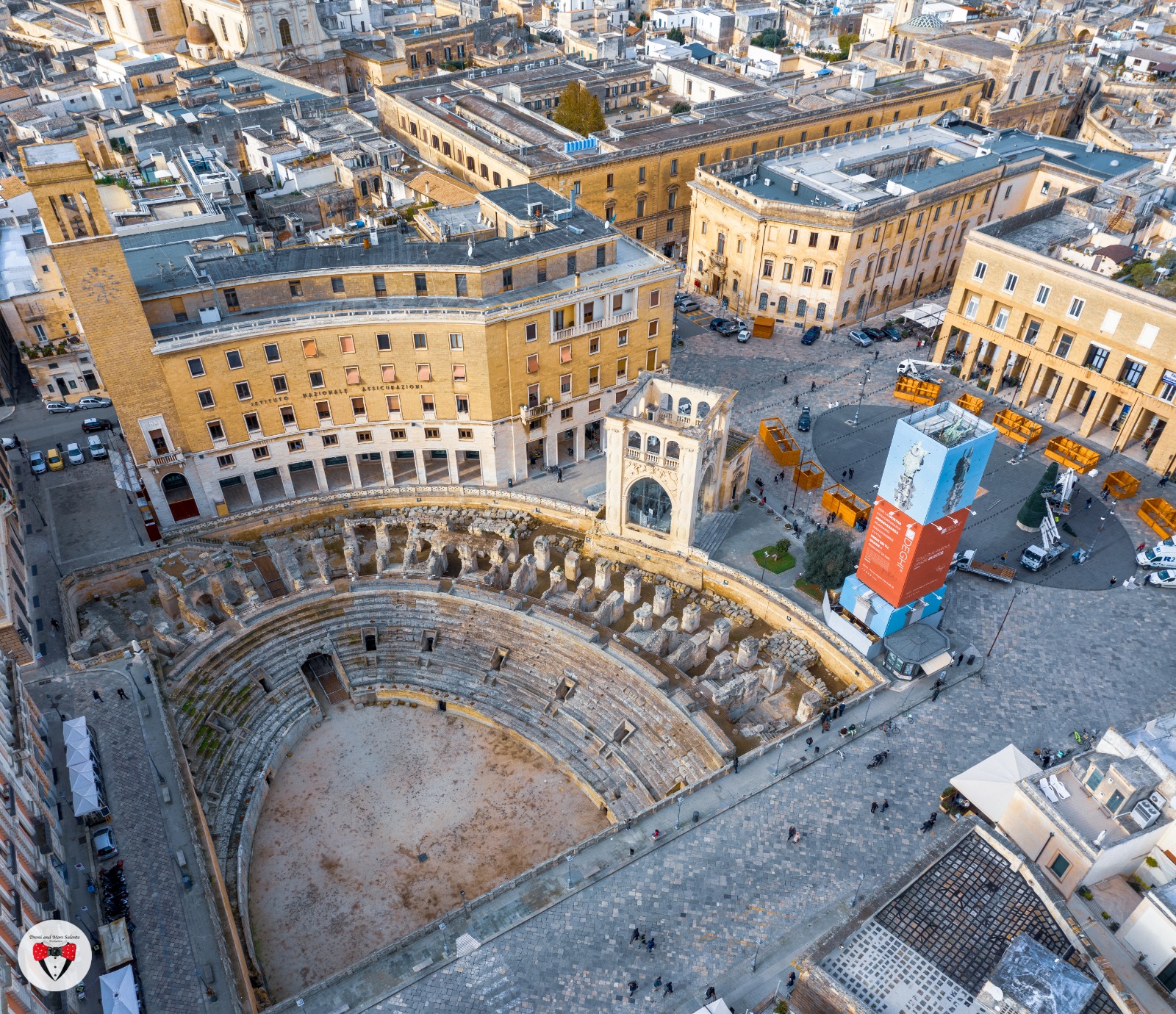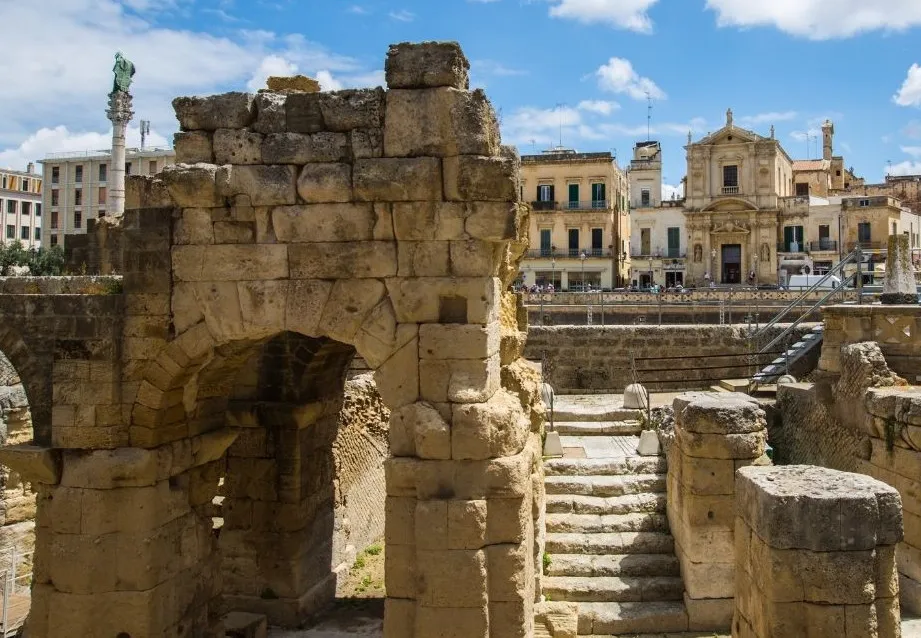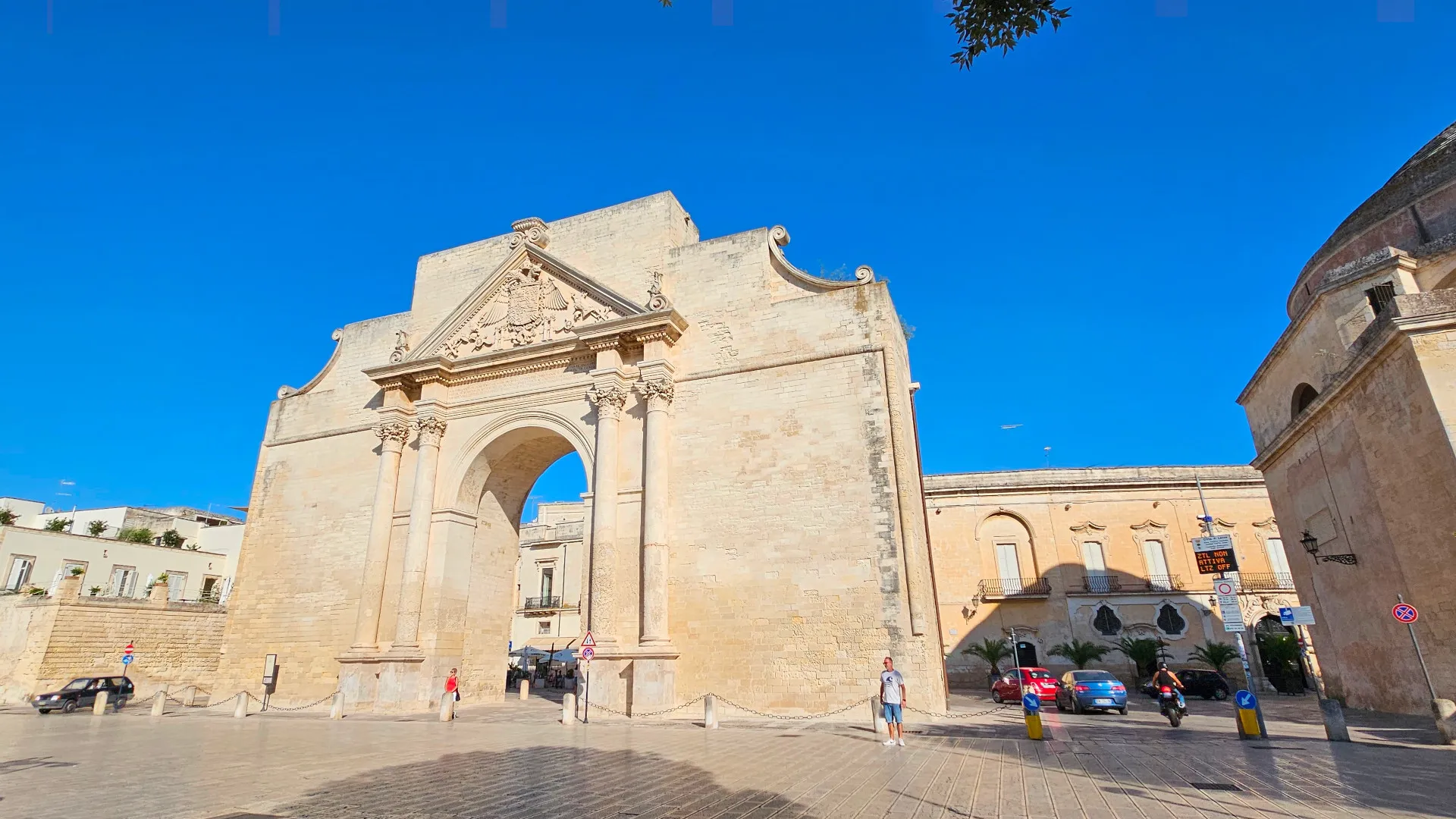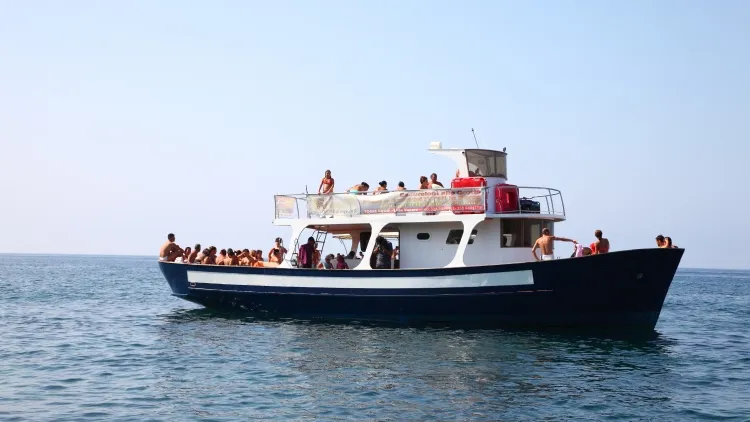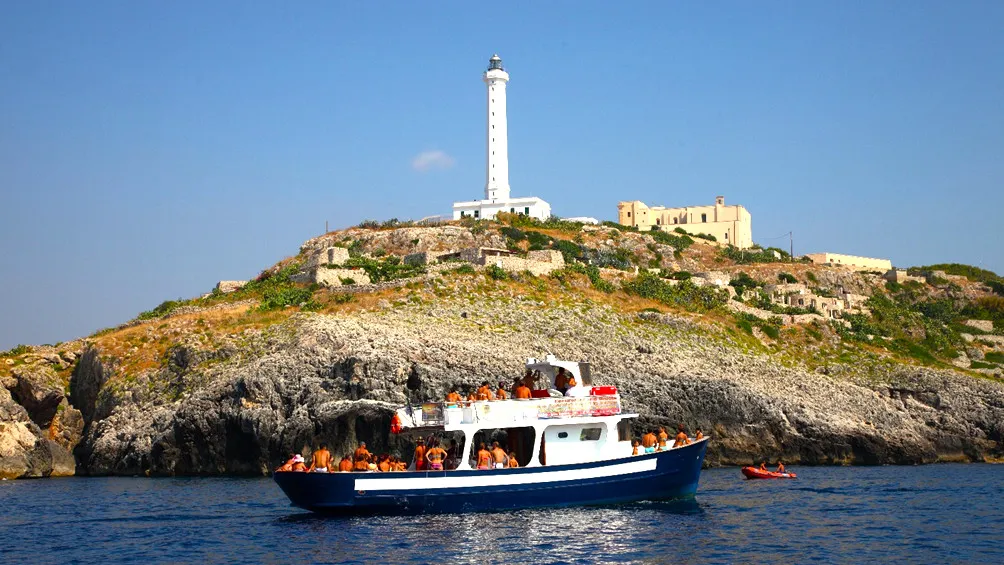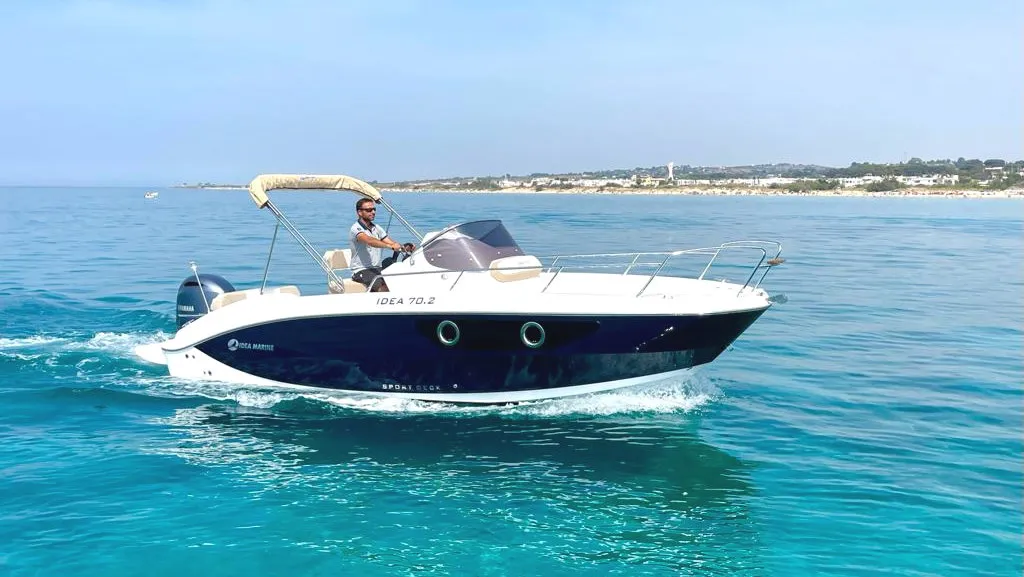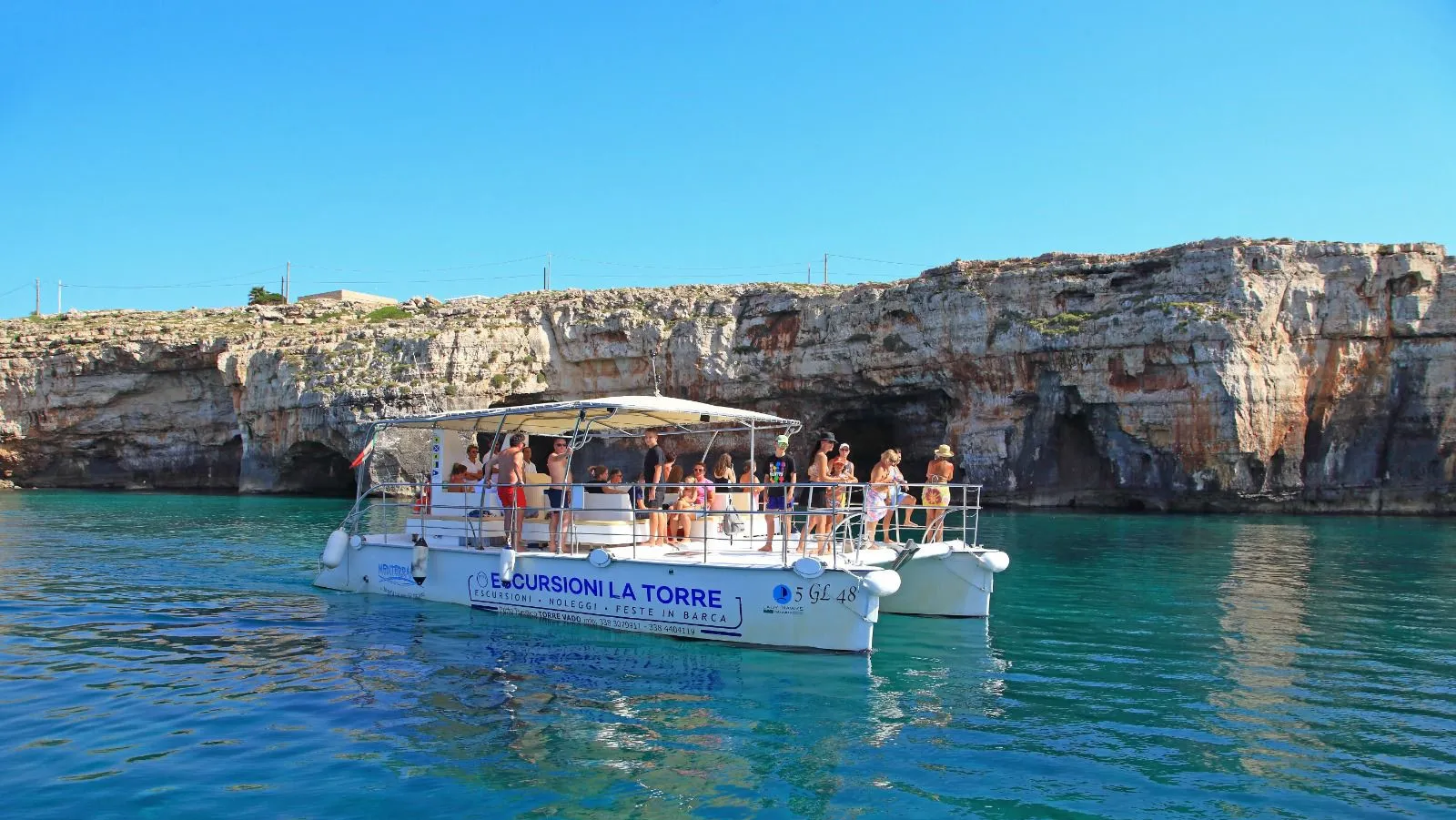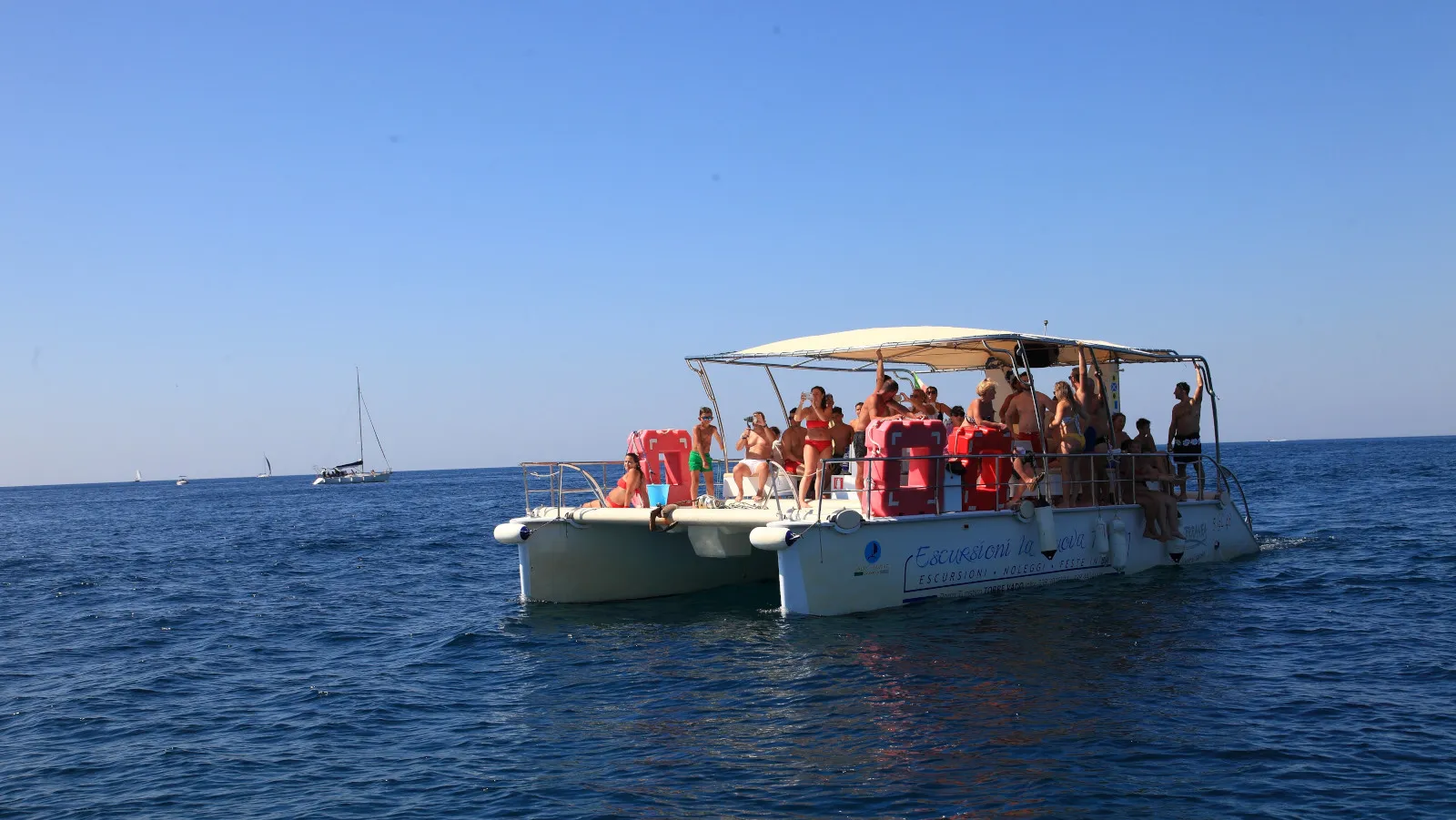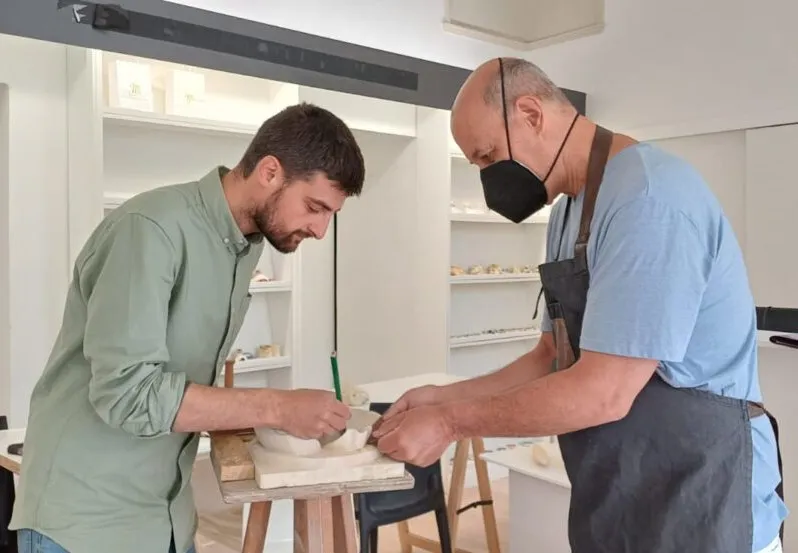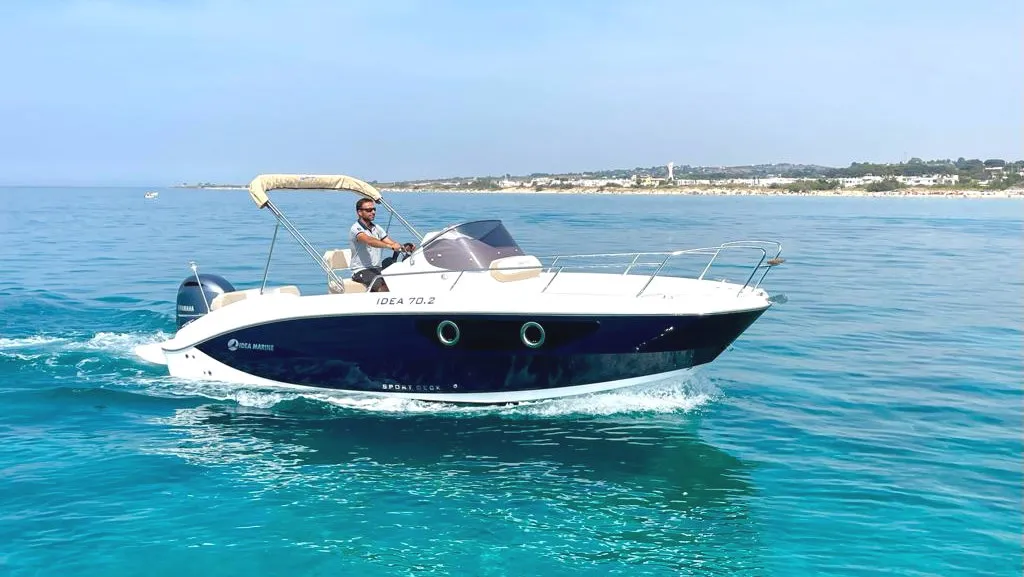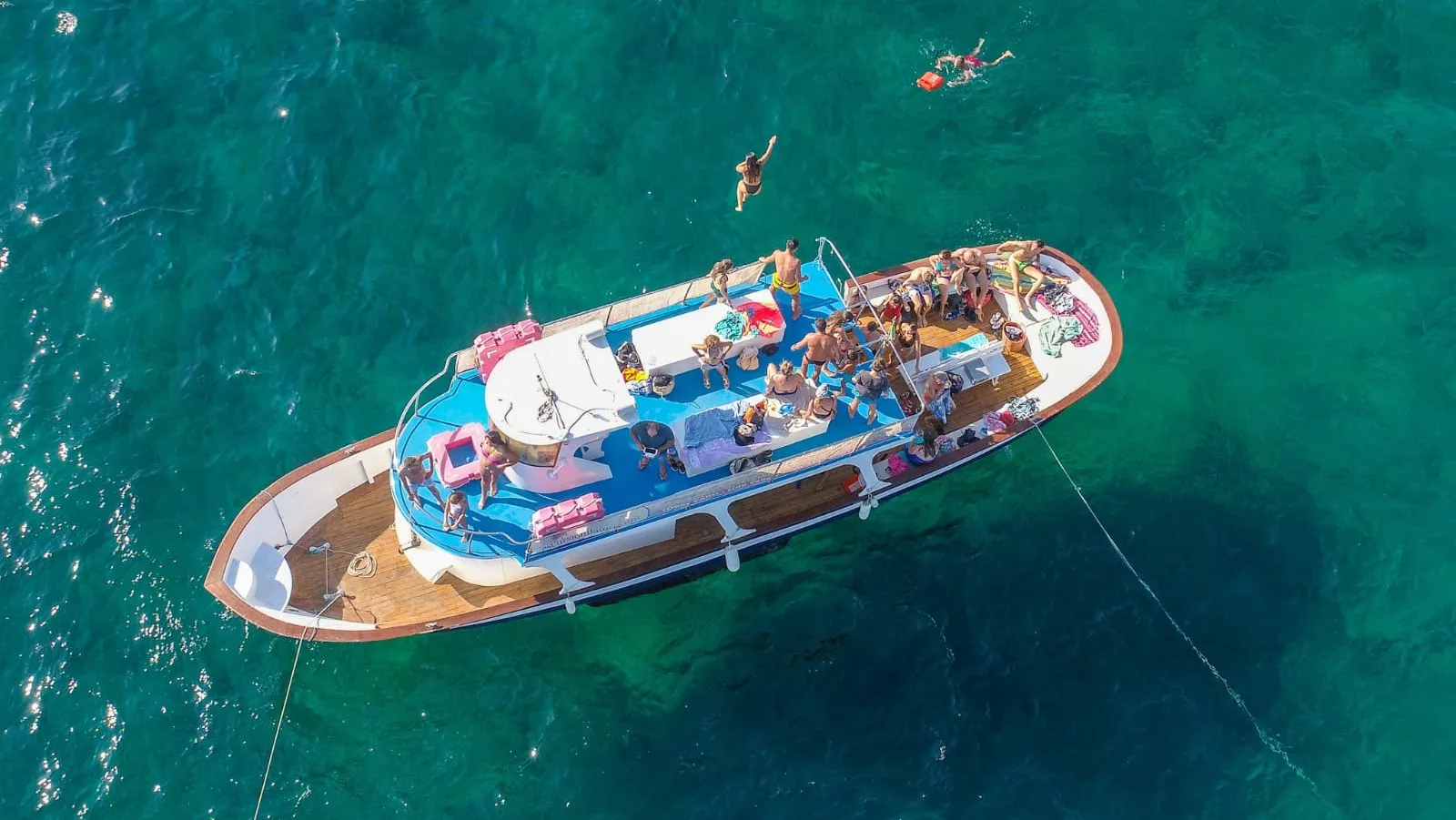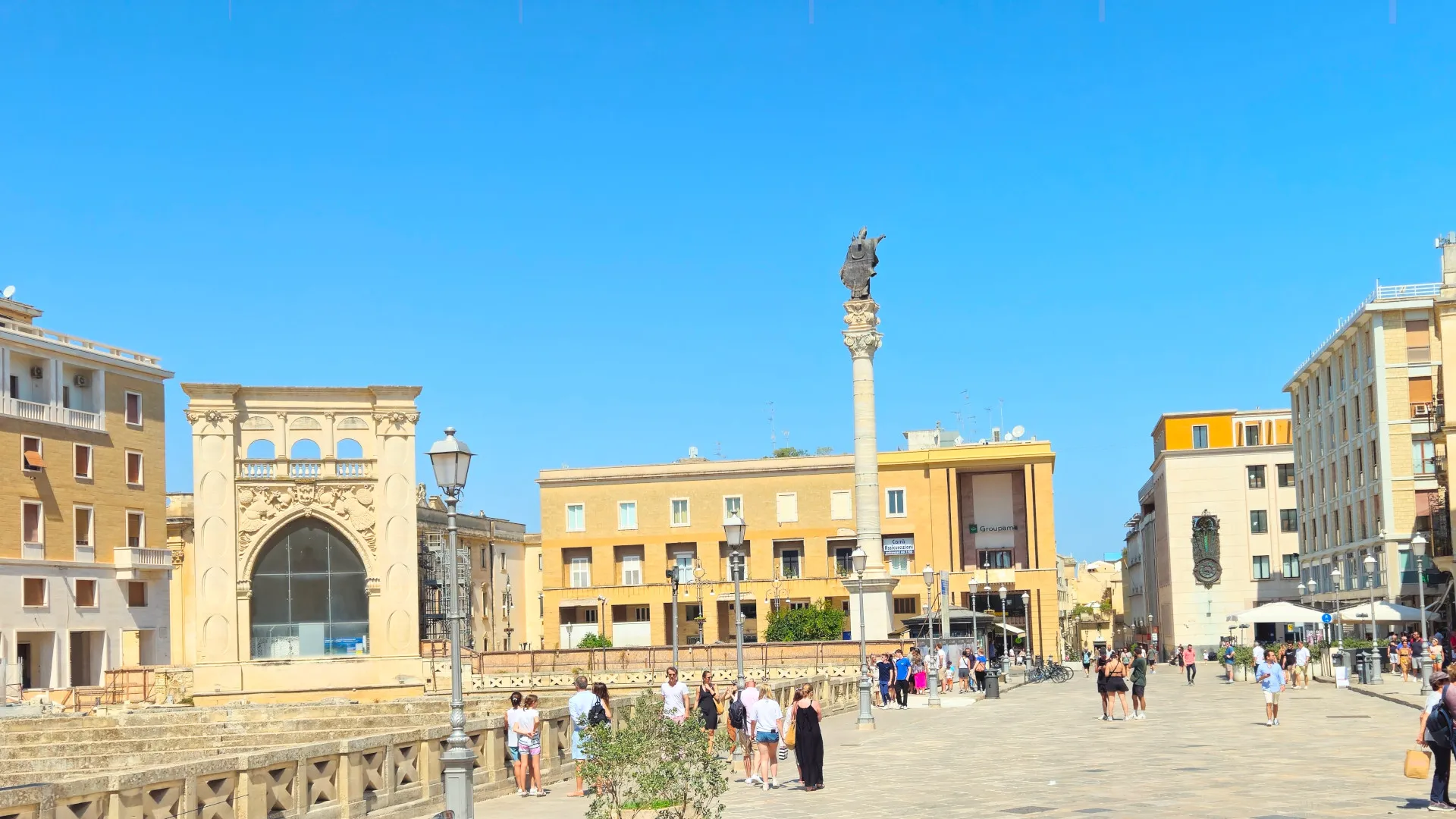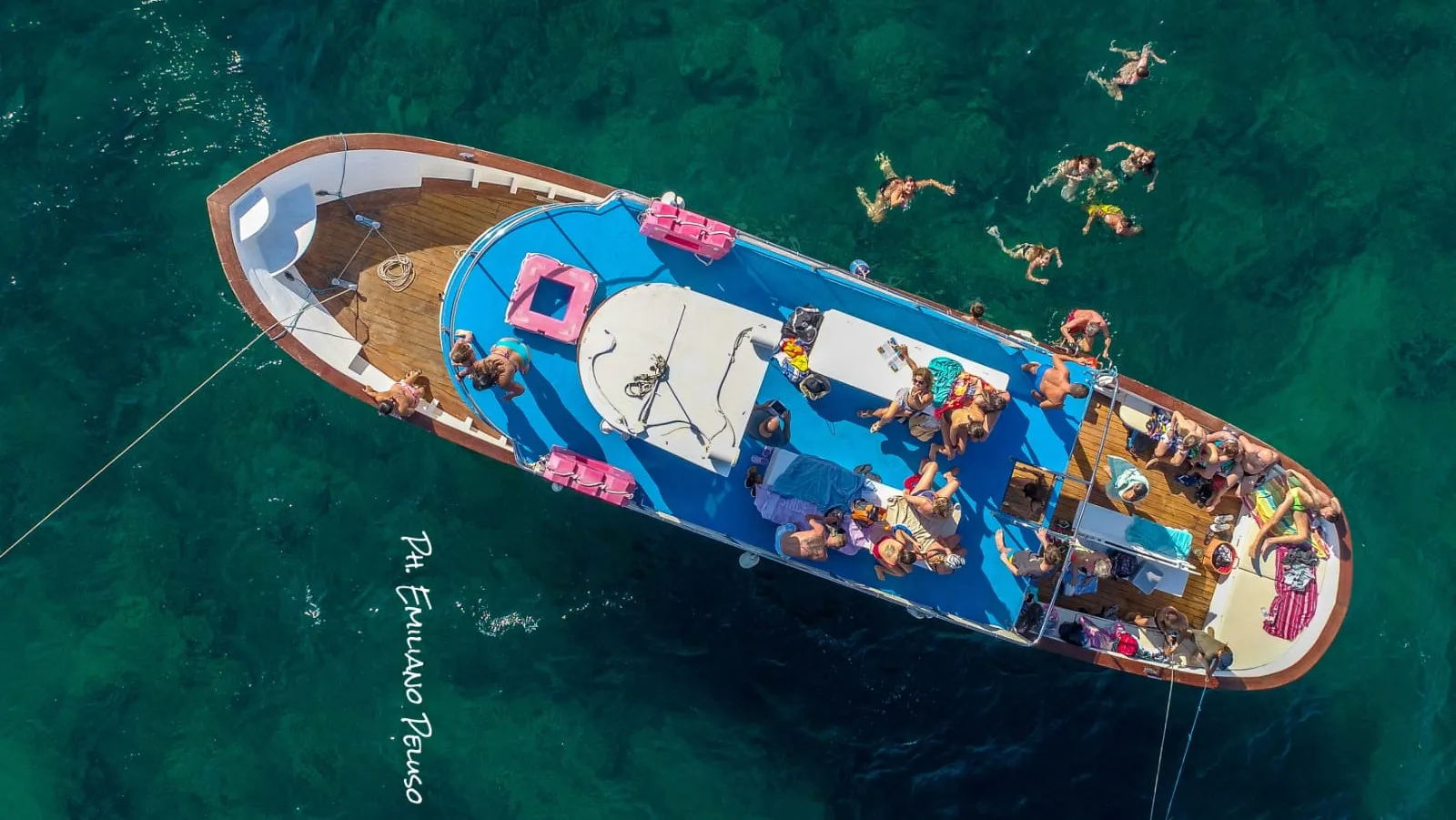Lecce is the capital of its namesake province in Apulia and is situated in the central part of Salento, a peninsula known as the "heel" of the Italian boot. The city is well-connected to the rest of the region and the major Italian cities through a network of roads and railways.
Located in the bright Apulian landscape, Lecce is aptly nicknamed the "Florence of the South," a title that celebrates its artistic beauty, comparable to that of the renowned Tuscan city.
The characteristic Lecce stone, a soft and malleable local limestone, has been masterfully crafted to create elaborate facades that play with the southern sunlight, giving the city an almost surreal atmosphere.
The historic center is a maze of alleys and squares, where every corner reveals baroque churches and noble palaces that tell the rich history of Lecce. These monuments are guardians of centuries of history and witnesses to the city's artistic and cultural evolution.
Lecce is also a fervent melting pot of cultural activities, ranging from classical music to cinema, hosting festivals and events that attract visitors from around the world.
What to see in Lecce?
- Basilica di Santa Croce
- Crypt of Santa Croce
- Piazza del Duomo
- Roman Amphitheater
- Piazza Sant’Oronzo
- Roman Theater
- Castle of Charles V
- Faggiano Museum
- Porta Napoli
- Must – Historical Museum of the City of Lecce
- Piazza Mazzini
- Torre del Parco
- Public Gardens (Villa Comunale di Lecce)
Things to Do in Lecce
What to do nearby
The Basilica of Santa Croce

The Basilica of Santa Croce is one of the most celebrated architectural masterpieces in Lecce and an extraordinary example of Lecce baroque style.
The construction of the church began at the end of the 16th century and continued for about a century, with numerous artists and architects contributing to its realization.
Architecture and Design
The facade of the basilica is a true triumph of the baroque, richly decorated with twisted columns, niches, statues, animals, and allegorical symbols that create a breathtaking visual effect. The decoration is so detailed and intricate that it almost seems to vibrate under the sunlight, an effect that is accentuated by the softness of the Lecce stone, which allows for particularly fine craftsmanship.
The facade is divided into two tiers: the lower tier features a portal flanked by columns and statues placed in niches, while the upper tier is dominated by a large central window. The entire composition is crowned by a series of statues representing saints and biblical figures.
The interior of the church has three naves, with a series of side chapels that house altars and artworks. Although the interior is less ornate than the facade, it is still elegant and provides a meditative environment. The altars and chapels are enriched with paintings and sculptures from the baroque period.
Cultural and Religious Importance
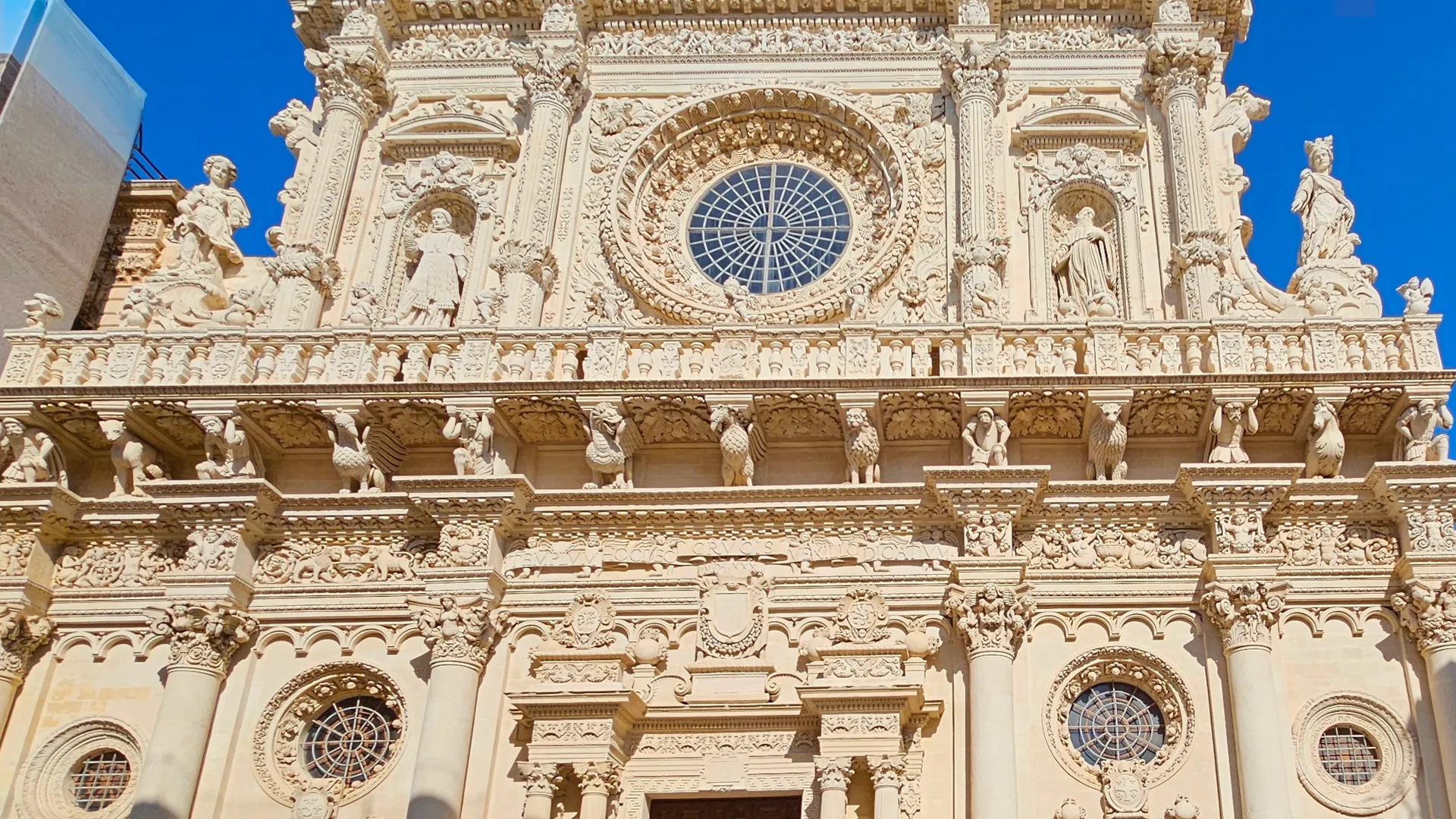
The Basilica of Santa Croce is a place of great religious and cultural importance for the city of Lecce. The basilica is part of a larger complex that also included the Convent of the Celestini, which now houses government offices.
Today, the Basilica of Santa Croce remains a focal point for religious celebrations and processions, especially during Holy Week and other Catholic holidays. It is also one of the main tourist attractions in Lecce, drawing visitors from all over the world who come to admire its architectural and artistic splendor.
Opening Hours
The Basilica of Santa Croce in Lecce is generally open to visitors, but the opening hours may vary depending on the season and ongoing religious functions.
Typically, the basilica is open from 9:30 AM to 1:00 PM and from 3:30 PM to 6:00 PM.
However, it is always advisable to check the specific times before visiting, especially if you are planning to go during a particular time of the year or during holidays, when hours may change.
Crypt of Santa Croce
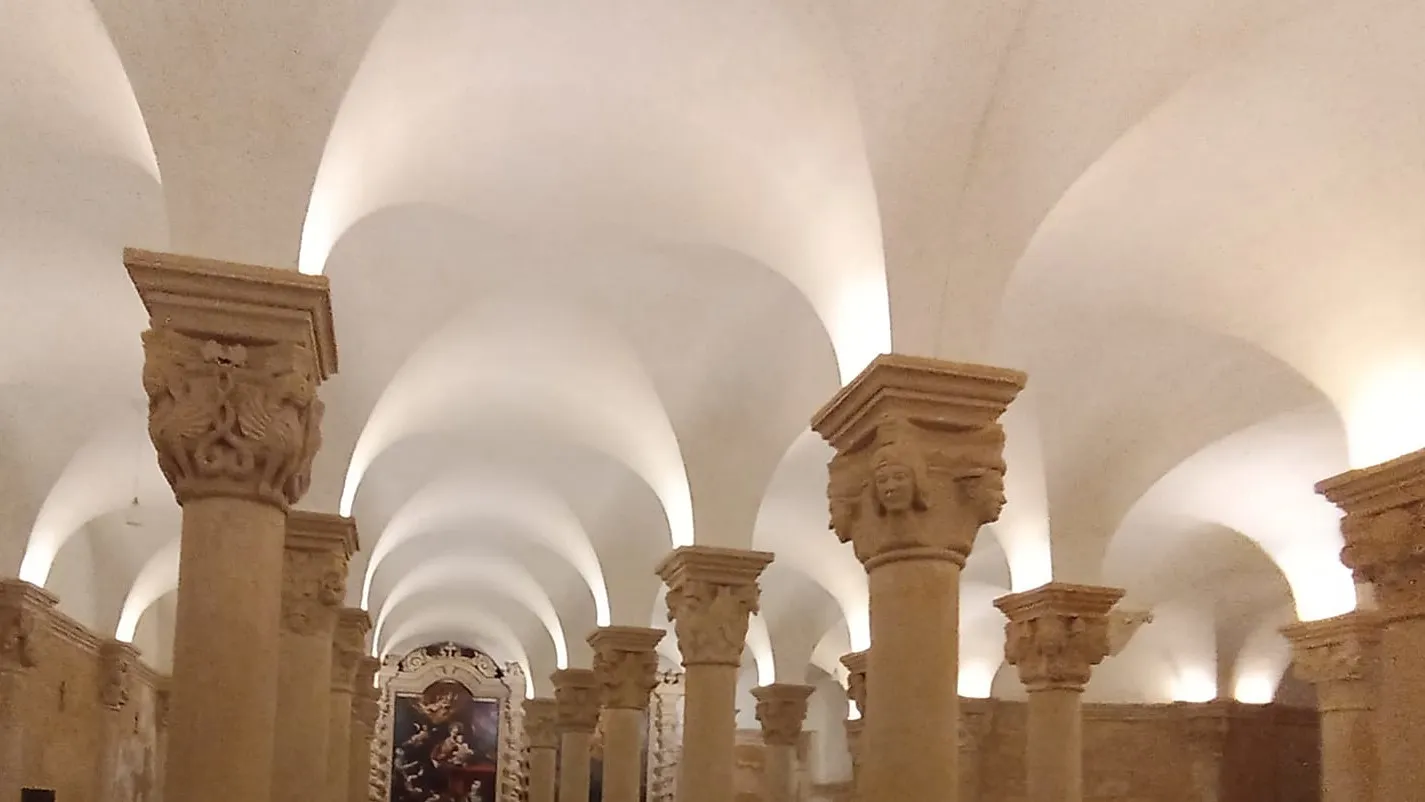
The Crypt of Santa Croce in Lecce, located beneath the homonymous basilica, is a less-known but fascinating part of the architectural complex. The crypt dates back to the 12th century, long before the construction of the baroque basilica above it. It represents an interesting contrast to the opulence of Lecce baroque visible on the upper floor.
Features of the Crypt
The crypt is characterized by a series of columns and capitals that support low vaulted ceilings, creating an intimate and meditative atmosphere. The architectural elements show Romanesque influences and are decorated with simple carved motifs.
The walls and pillars are adorned with medieval frescoes, many of which have been restored to preserve their historicity and beauty.
Visits to the Crypt, Hours, and Costs
Visiting the Crypt of Santa Croce can be a unique experience for those interested in medieval history and sacred art.
The opening hours of the crypt may vary, and they are often not advertised as widely as those of the basilica. Generally, if the crypt is open to visitors, it will follow the same hours as the basilica: from 9:30 AM to 1:00 PM and from 3:30 PM to 6:00 PM.
Sometimes, entry into the crypt may require a small admission fee or a contribution for maintenance, especially if the visit is part of a guided tour that includes other areas not usually open to the public.
Admission policies may change based on the management of the basilica and the conservation needs of the site.
Tips for Visiting
For those wishing to visit the crypt, it is recommended to wear appropriate clothing for a place of worship and consider the possibility of a tour guide who can enrich the visit with historical and artistic details.
Moreover, informing yourself in advance about the specific details of the visit can help plan a more enjoyable and seamless visit.
Piazza del Duomo
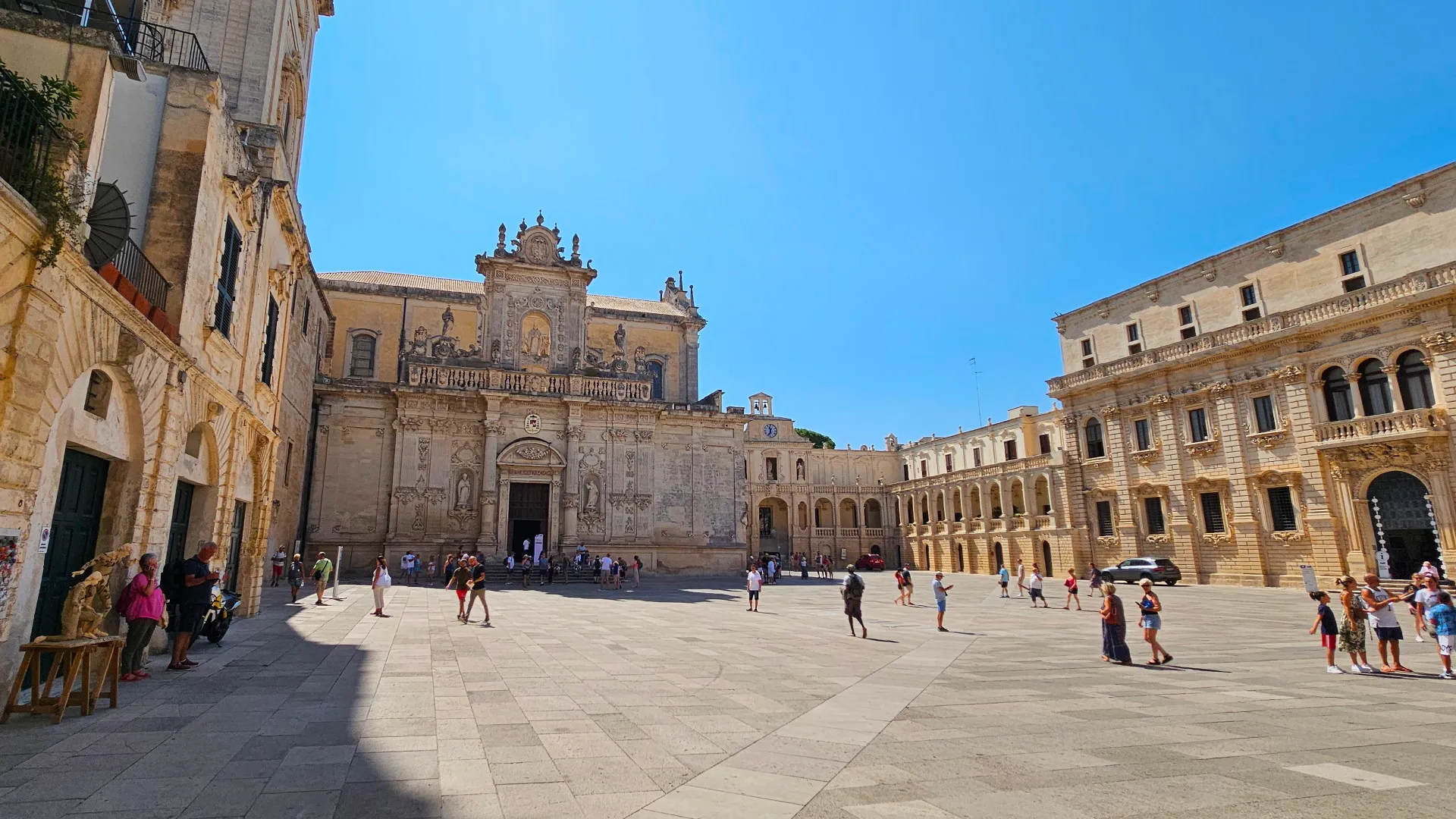
Piazza del Duomo in Lecce is one of the most evocative and representative Italian squares, famed for its unique atmosphere and predominantly Baroque architectural style.
It is an enclosed space accessible through narrow alleys, making it a kind of "hidden square," surprising for those who discover it for the first time.
Piazza del Duomo at night is particularly striking: the lighting accentuates the Baroque facades of the buildings and creates an almost magical atmosphere.
Things you can see when visiting Piazza del Duomo in Lecce are:
- Lecce Cathedral
- Cathedral Bell Tower
- Bishop's Palace
- Palace of the Seminary
- State Archives of Lecce
Lecce Cathedral
Also known as the Cathedral of the Assumption of the Virgin, the Cathedral is the focal point of the square. Its facade is a magnificent example of Lecce Baroque, but it is unique for having two entrances: one facing the square and the other towards a side alley. The interior is richly decorated and includes an impressive central nave. The side chapels host valuable sacred artworks, including some 17th-century paintings.
Cathedral Bell Tower
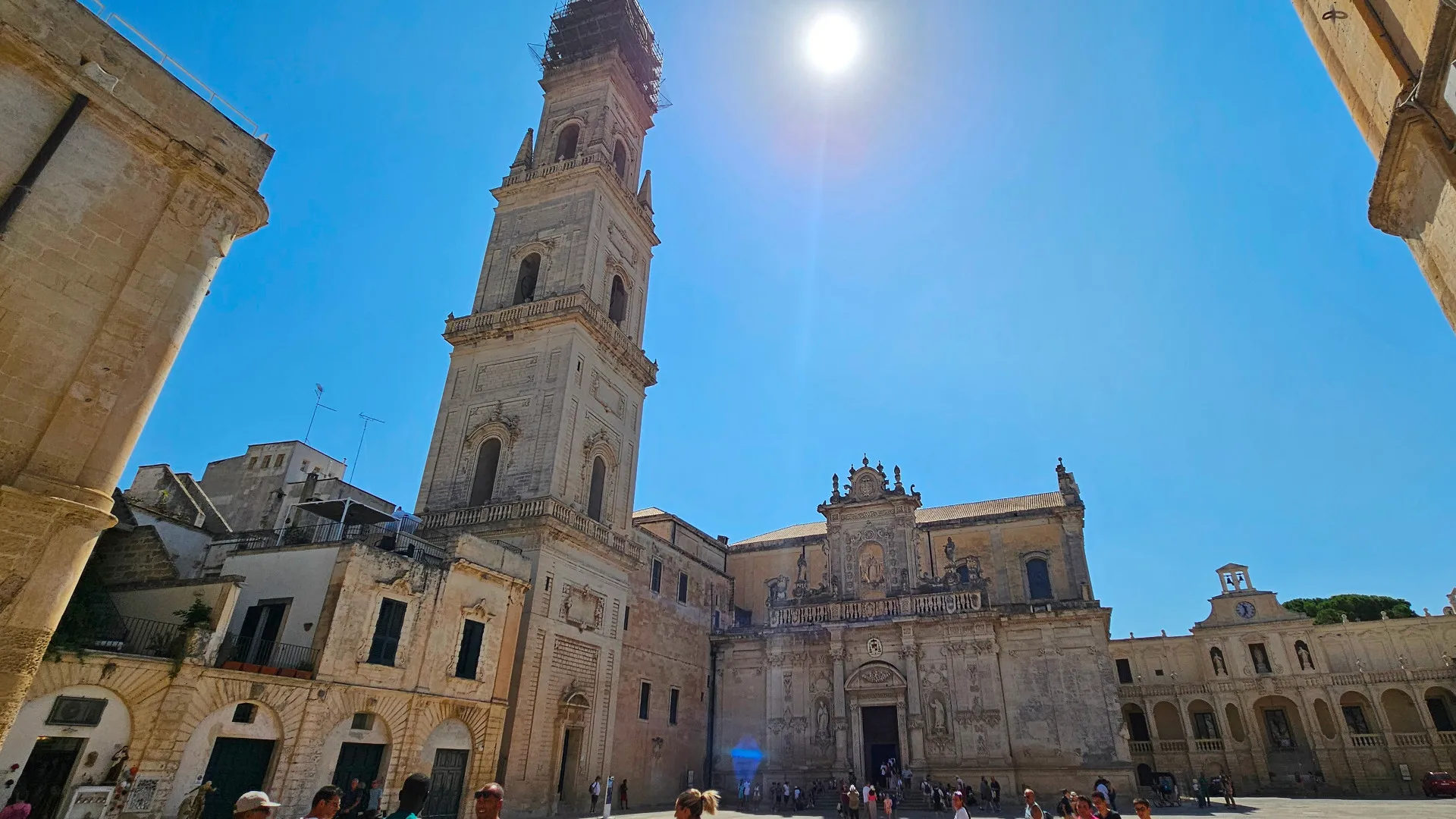
At 70 meters tall, the bell tower of the Cathedral is one of the tallest structures in Lecce and an excellent example of Baroque architecture.Its internal staircase, made up of 184 steps, leads visitors to the top, where they can enjoy a breathtaking panoramic view of the city and the surrounding countryside. The tower is topped by an ornate dome that is visible from many parts of the city, serving as a landmark for both residents and visitors.
Bishop's Palace
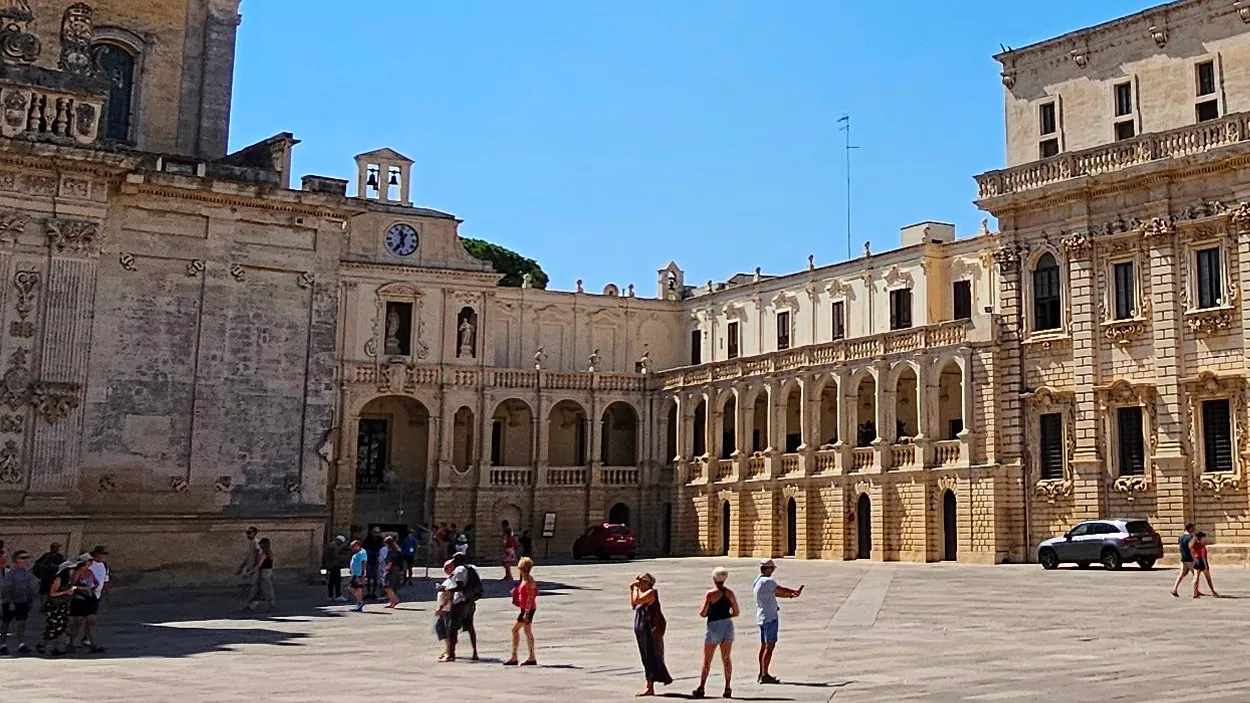
Located adjacent to the Cathedral, the Episcopal Palace features a Baroque facade that exhibits a complexity of architectural forms with crafted balconies and ornate windows. Inside, the palace is equally imposing, with rooms displaying Baroque period frescoes, coffered ceilings, and antique furniture. The rooms vary in size and decoration, used for both diocesan functions and official receptions.
Palace of the Seminary
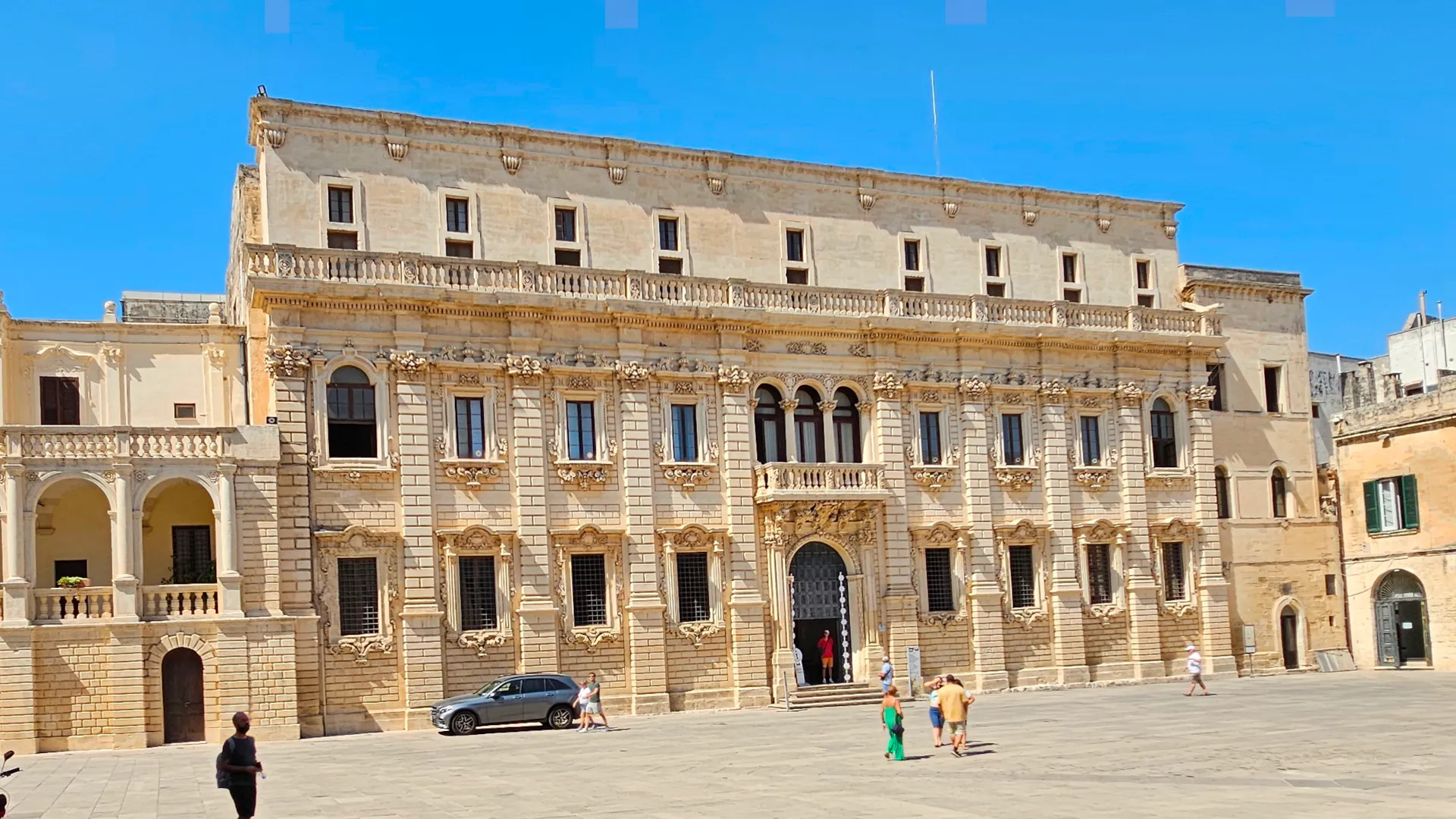
ext to the Cathedral is the Seminary, built to train future priests but today also used for cultural events and exhibitions.This building significantly contributes to the Baroque aesthetics of the square with its symmetrical and decorated facade. Its internal courtyards, accessible through an elegant portal, are a haven of peace, featuring well-maintained gardens, ancient fountains, and corridors wrapped in stone vaults.
State Archives of Lecce
Occupying part of the Seminary Palace, the State Archive is not always open to the public but offers an incredible resource for scholars and researchers.It preserves historical documents dating back to the Middle Ages, civil registers, ancient maps, and manuscripts that recount the history of Lecce and the Salento region. When open for special exhibitions, it offers visitors a unique window into the documentary past of the city.
Roman Amphitheater

The Roman Amphitheater of Lecce is one of the most significant monuments that testify to the Roman past of the city. Located in the heart of the historic center, near Piazza Sant'Oronzo, the amphitheater is partially hidden under the modern level of the city, revealing only a fraction of its original structure.
Built in the 2nd century AD during the reign of Emperor Hadrian, the amphitheater could accommodate about 25,000 spectators, a figure that underscores the importance of Lecce (or Lupiae, as it was known in Roman times) as a cultural and social center in that region.
It was discovered by chance in 1901 after being buried and forgotten for centuries under subsequent buildings and debris accumulations.
Structure and Architecture
The amphitheater is elliptical and retains much of its original masonry structure. Although only about a third of the entire amphitheater is visible today, the emerged parts allow one to appreciate the impressive Roman engineering.
The stands, corridors, and entrances are still partially intact, and one can easily imagine the atmosphere that prevailed during ancient performances, which included gladiator fights and other forms of entertainment.
The Amphitheater Today
Today, the Roman Amphitheater is a popular tourist attraction and a cultural landmark for the city.
During the summer, the amphitheater revives its ancient splendor by hosting events, theatrical performances, and concerts that take advantage of the unique acoustics and historic environment. These events offer visitors the opportunity to experience the structure in a context similar to that for which it was originally built.
Piazza Sant’Oronzo
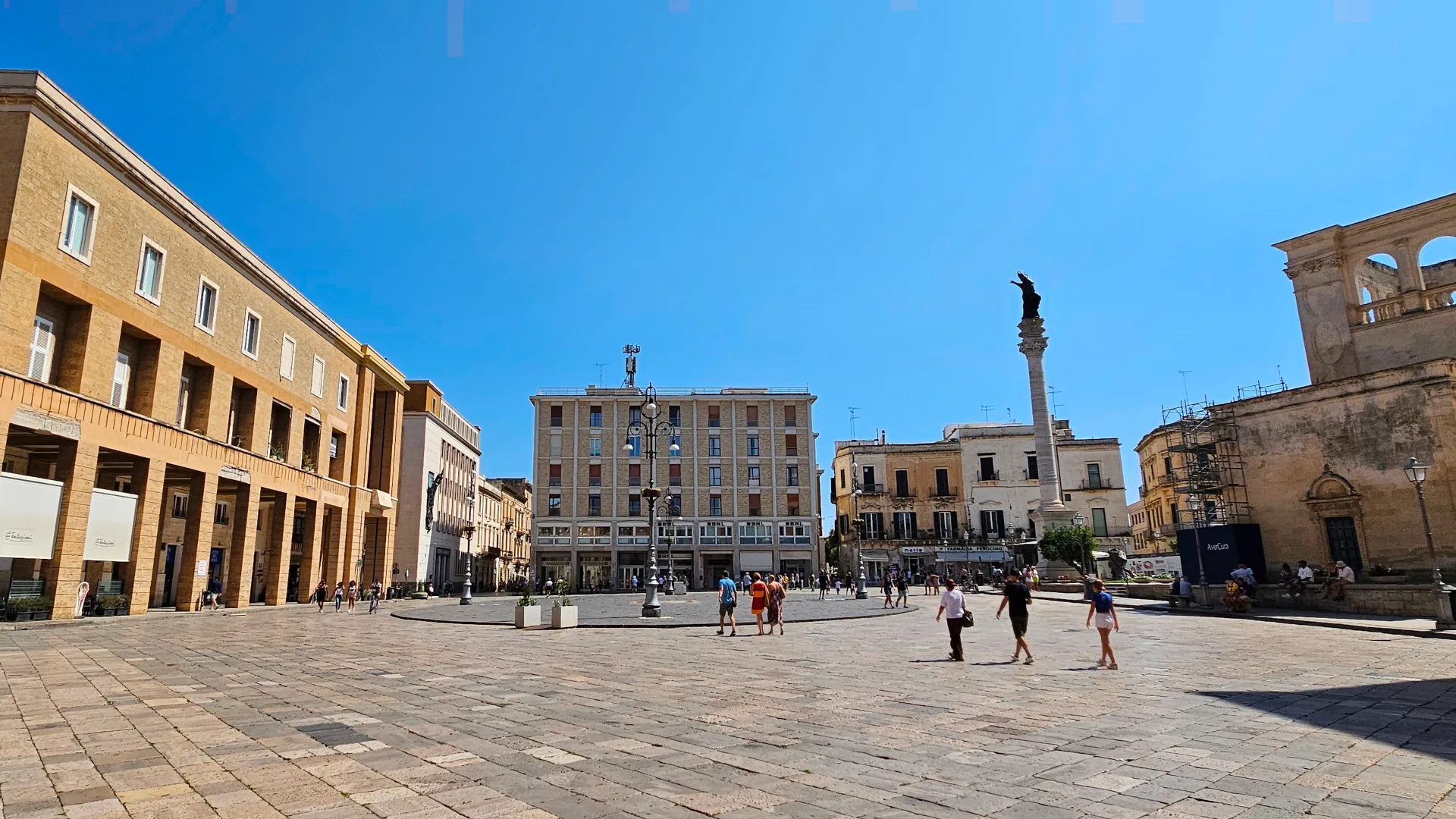
Piazza Sant'Oronzo is one of the nerve centers of Lecce, important both for its strategic position in the heart of the city and for its rich historical and cultural context. It is a meeting place for residents and a point of interest for tourists, offering a variety of historical and modern attractions.
The square has witnessed multiple layers of Lecce's history, from the Roman era to modern times, serving as a stage for the city's cultural and social events.
The square is dedicated to the city's patron saint, Sant'Oronzo, whose monument, a statue atop a Roman column originally part of a pair that marked the end of the Via Appia in Brindisi, dominates the space.
The square is a perfect example of how Lecce's past and present intertwine. The historical layers of the city, from the Roman period to the Baroque and up to the present day, are all visible and alive in this public space, making it an ideal starting point for exploring Lecce and its historical riches.
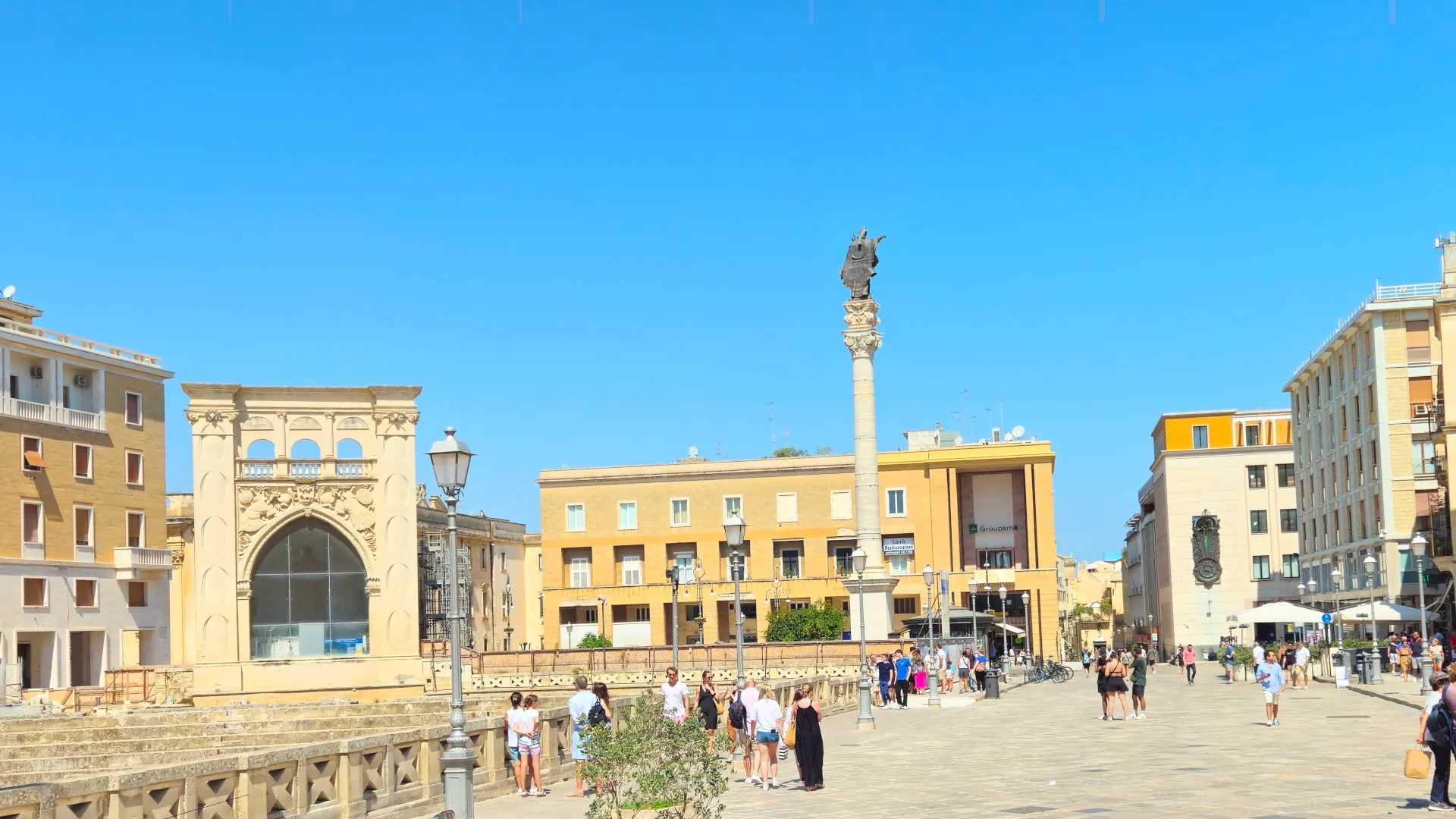
In addition to the Roman Amphitheater, various monuments can be admired in this square:
- Column of Sant'Oronzo: The column, which originally was part of a pair at the end of the Via Appia in Brindisi, was transported here in 1666. Topped by the statue of Sant'Oronzo, the city's patron, the column is a significant landmark in the square.
- Il Sedile: This ancient building was used for the city's administrative meetings. Today, it houses the tourist information office, and access is free.
- Church of San Marco: A small Venetian church located in the square, built by the Venetian community residing in Lecce in past centuries. This is also freely accessible.
Roman Theater

The Roman Theater of Lecce, located in a somewhat hidden position, near the church of Santa Chiara, in the historic center of Lecce.
The Roman Theater was built between the 1st and 2nd centuries AD, during the peak of the Roman Empire. Like many other archaeological treasures in Lecce, the Roman Theater was only rediscovered in the 20th century, after being buried for centuries under subsequent constructions. Its rediscovery offered a new perspective on the size and importance of Lecce in Roman times.
Features
The theater has an estimated capacity of about 5,000 spectators, significantly smaller than the amphitheater but no less important.
It is semicircular and retains much of its original structure, including the steps where spectators sat, parts of the stage, and adjacent spaces used by actors and stage personnel.
Excavations have also brought to light numerous decorative elements that suggest the theater was once richly adorned, typical of Roman opulence.
Current Use
Today, the Roman Theater is open to visitors and during the summer months is sometimes used to host cultural events, such as theatrical performances and concerts, thus continuing its ancient function as a performance space.
These events are particularly evocative, as they take place in an unchanged historical context, offering a unique experience for both artists and the audience.
Charles V Castle
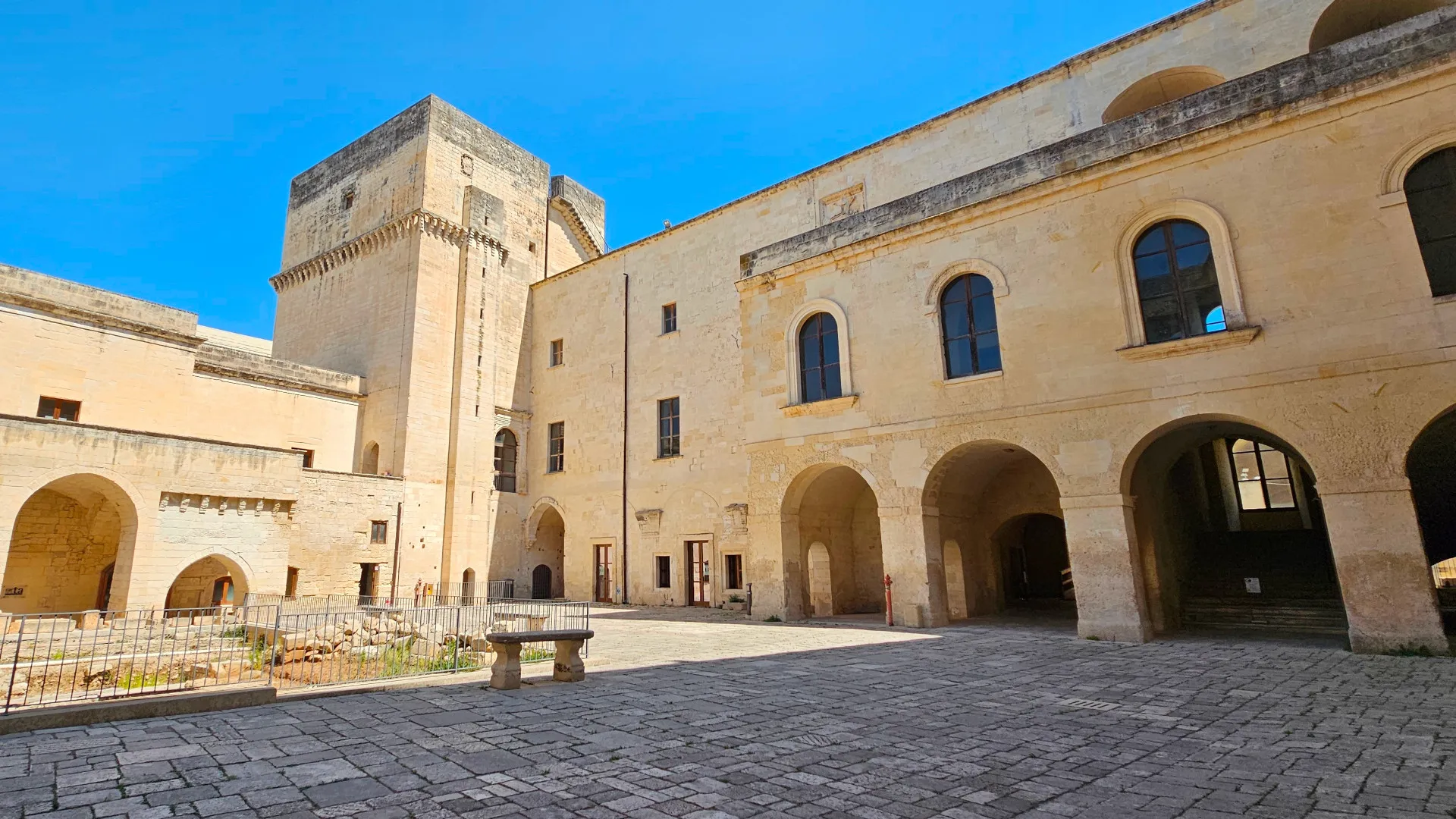
Charles V Castle in Lecce is one of the most imposing and well-preserved fortified structures in the city. Built in the 16th century by Emperor Charles V of Habsburg, the castle was erected to defend Lecce from Ottoman incursions and to strengthen the city's existing defenses.
Charles V Castle features typical Renaissance military architecture with sturdy walls and corner towers. The structure is almost square, with protruding bastions at each corner for better defense. The walls are thick and formidable, constructed to withstand artillery attacks. Inside, the castle includes a large courtyard, surrounded by various levels of galleries and walkways.
One distinctive feature of the castle is the presence of intricate designs and symbols carved on the exterior walls and internally in the courtyards, which served not only decorative purposes but also represented symbols of power and protection.
Visiting the Castle
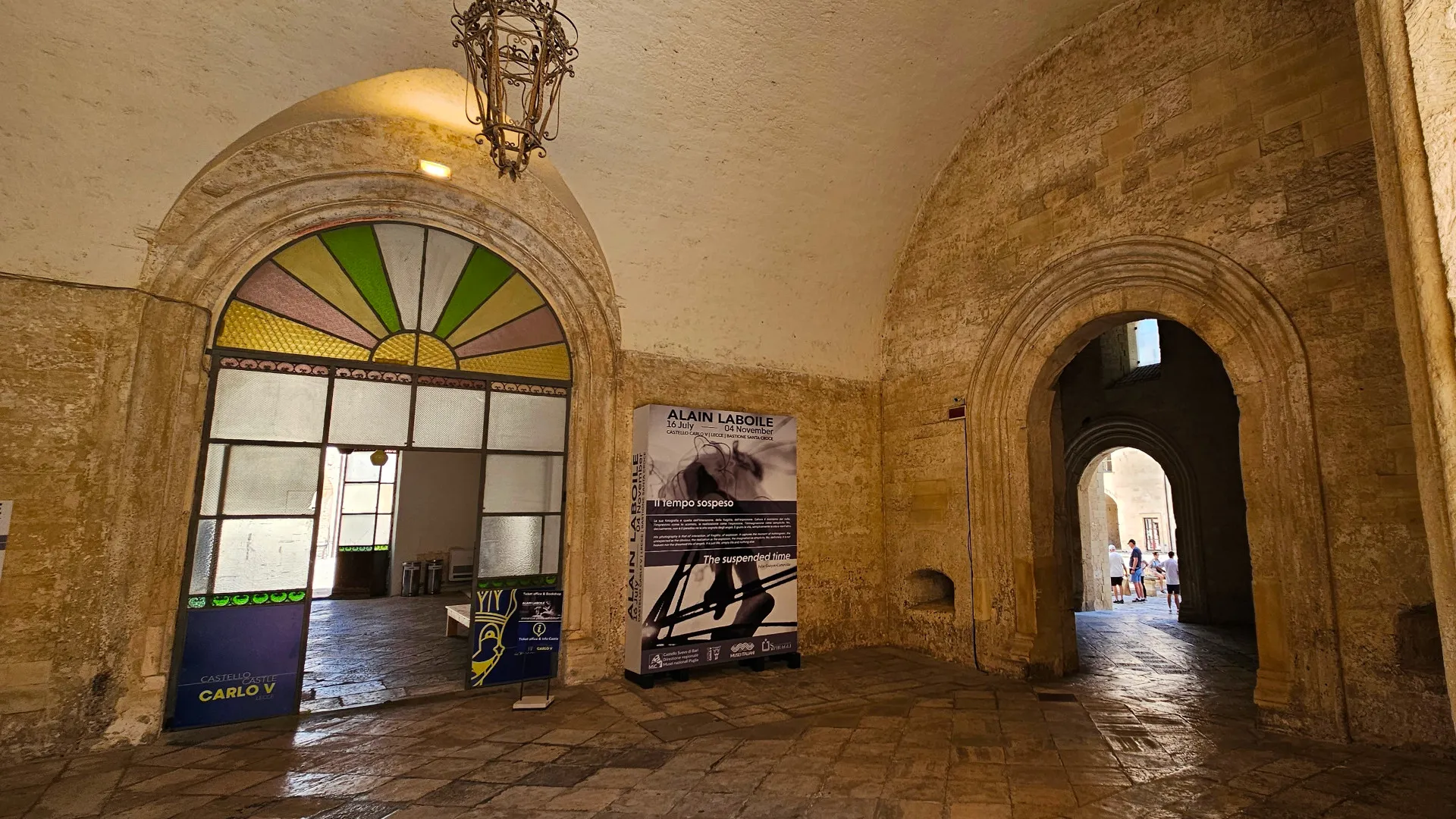
Visiting Charles V Castle in Lecce offers an immersive experience in history and art, allowing visitors to explore different parts of the structure and participate in various cultural events. Here’s what you can expect during a visit to the castle:
- Exploration of Defensive Structures: During the visit, you can walk along the castle’s robust walls and explore the four imposing corner towers. These structures were designed for defense and offer a perspective on 16th-century military strategy. The bastions, with their thick walls and guard walkways, are particularly interesting for those who love military architecture.
- Inner Courtyard and Galleries: The inner courtyard of the castle is a spacious open area, surrounded by galleries that once housed barracks and stables. Today, this space is used for events and exhibitions, making the courtyard a dynamic place within the castle.
- Exhibitions and Cultural Events: Charles V Castle frequently hosts art exhibitions, historical and cultural displays, and other events such as conferences and concerts. These activities are often set up in the various halls of the castle, which have been adequately renovated to serve as modern and functional exhibition spaces.
- The Museum: Inside the castle is a museum that tells the story of Lecce and the Salento region through archaeological finds, artworks, and informative panels. Visiting the museum is an excellent opportunity to deepen your understanding of the historical and cultural context of the region.
- Guided Tours: For those who desire a deeper understanding of the castle's history and architecture, guided tours are available. These tours are led by expert guides who can provide details about the construction of the castle, its history, and its use over the centuries.
Hours and Tickets

The opening hours of Charles V Castle may vary depending on the season and ongoing events.
Generally, the castle is open to the public with an admission fee, the cost of which contributes to the maintenance and management of the site. It is advisable to check the current hours and details of temporary exhibitions before visiting to best plan your itinerary.
Faggiano Museum
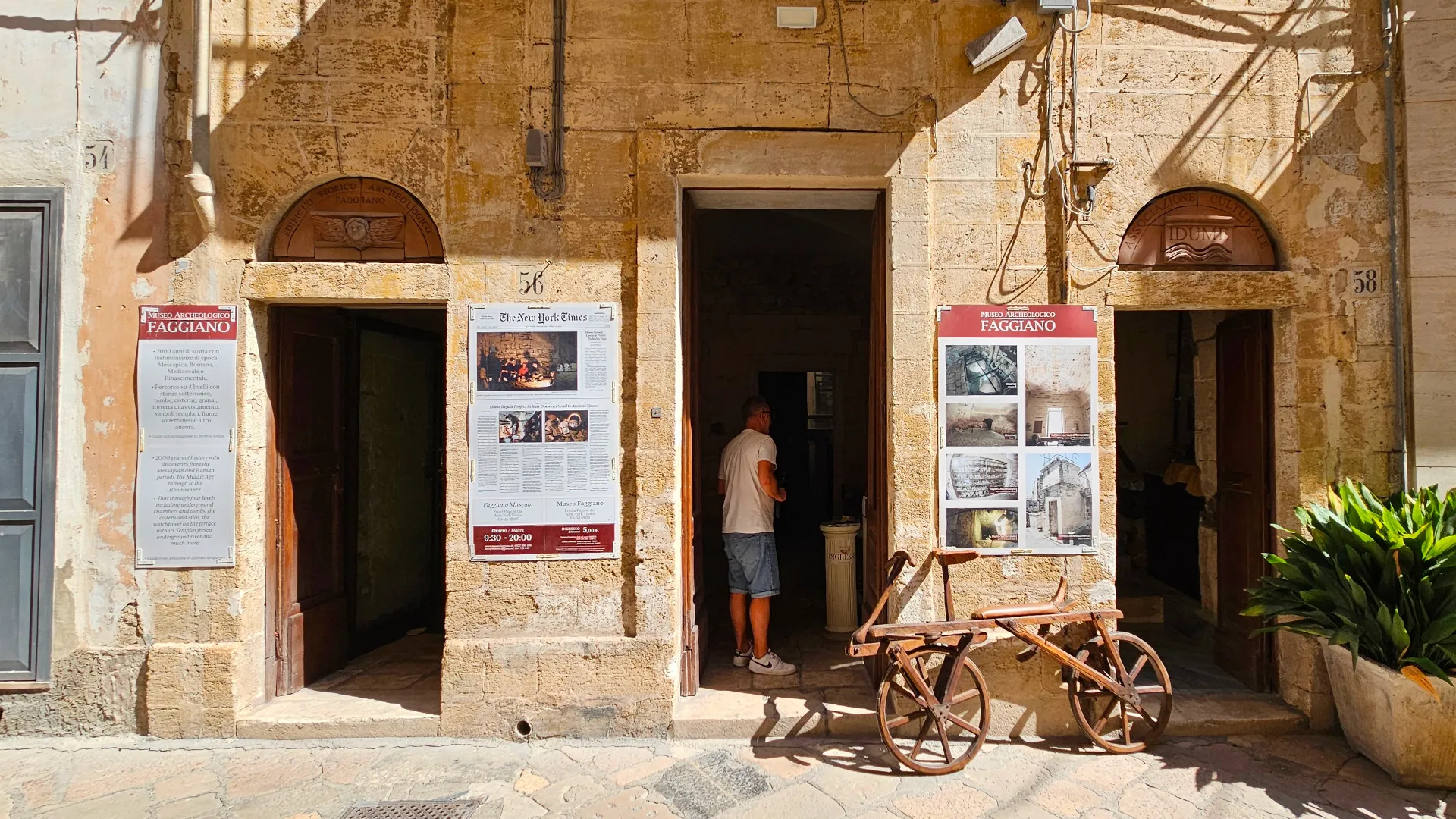
The Faggiano Museum is a unique and intriguing attraction located in the heart of Lecce. This private museum is the result of an accidental discovery made by the Faggiano family while trying to fix a pipe in their building in 2001.
What began as a home renovation project quickly turned into a significant archaeological excavation under the supervision of the Archaeological Superintendence.
The excavations revealed a series of finds from the Messapian era, through the Roman period, to the Middle Ages and Renaissance.
Among the discoveries are foundations of ancient buildings, tombs, a Messapian well, a Roman cistern, an underground oil mill, and numerous artifacts including coins, jewelry, and ceramics.
Museum Features
The Faggiano Museum is structured so that visitors can explore the various archaeological layers through glass floors and walkways that allow close observation of the finds and structures uncovered.
The exhibition path is enhanced by informative panels that explain the history of the displayed objects and structures, offering a deep insight into the different historical eras of Lecce.
Cultural Significance
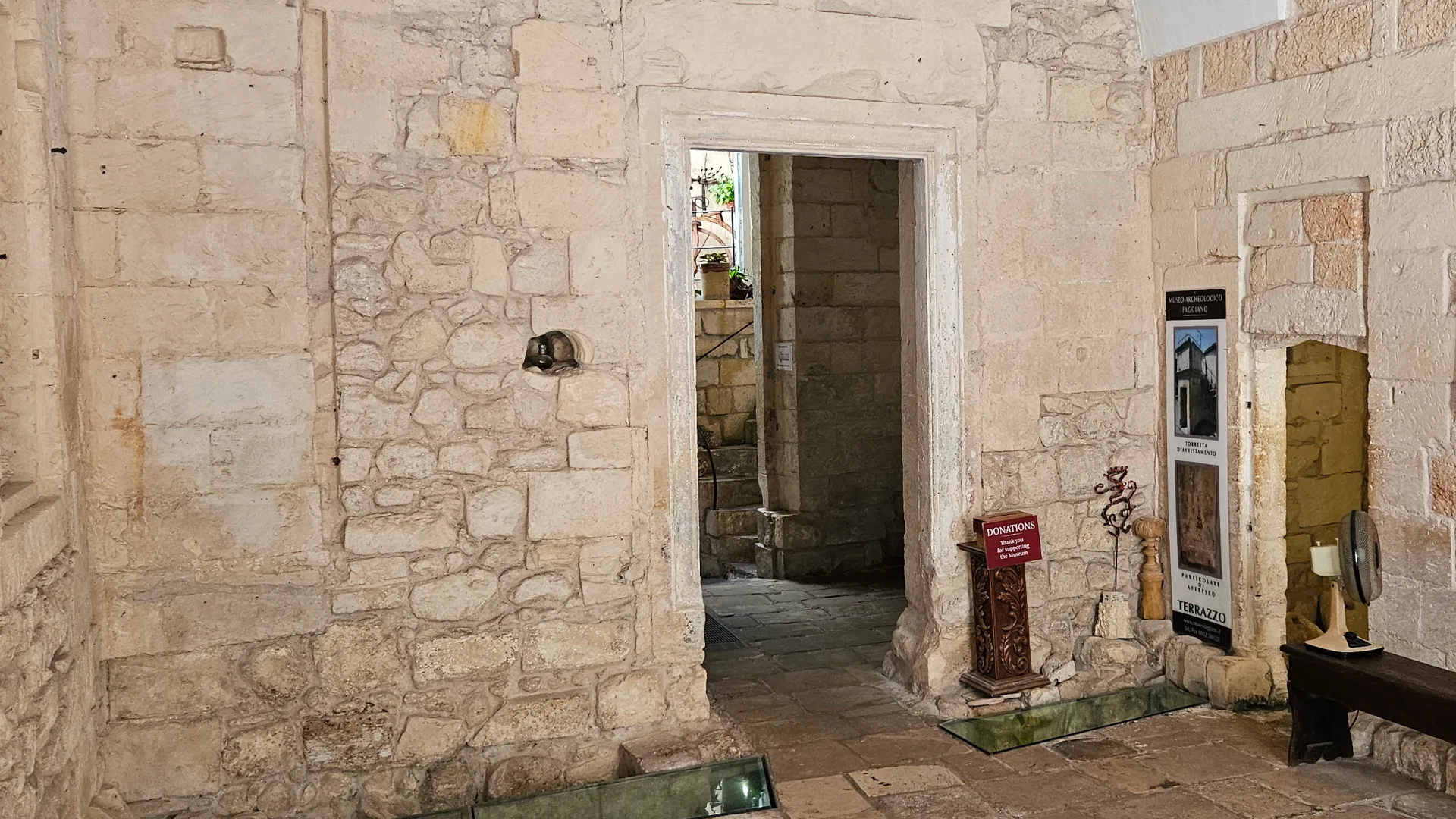
The museum offers an exceptional opportunity to see how the historical layers of Lecce have overlapped and intertwined, making it a site of great educational and cultural value.
It is particularly significant for archaeology and history enthusiasts, providing direct evidence of the city's urban and social evolution.
Visits, Hours, and Costs
The Faggiano Museum is open to the public and can be visited by purchasing an admission ticket. Visits are often self-guided, but the exhibition format and descriptive panels allow visitors to understand and appreciate the discoveries made independently.
Additionally, the Faggiano family is sometimes available to personally share their experiences and discoveries with visitors, further enriching the experience.
The museum is open every day from 9:30 am to 8:00 pm.
The cost of admission for individual visitors is 5.00 euros.
Family discount: 0 to 8 years FREE, 8 to 16 years 3.00 euros.
The ticket cost is donated to the Idume association, which is responsible for the maintenance and safeguarding of the museum.
What to do nearby
Porta Napoli
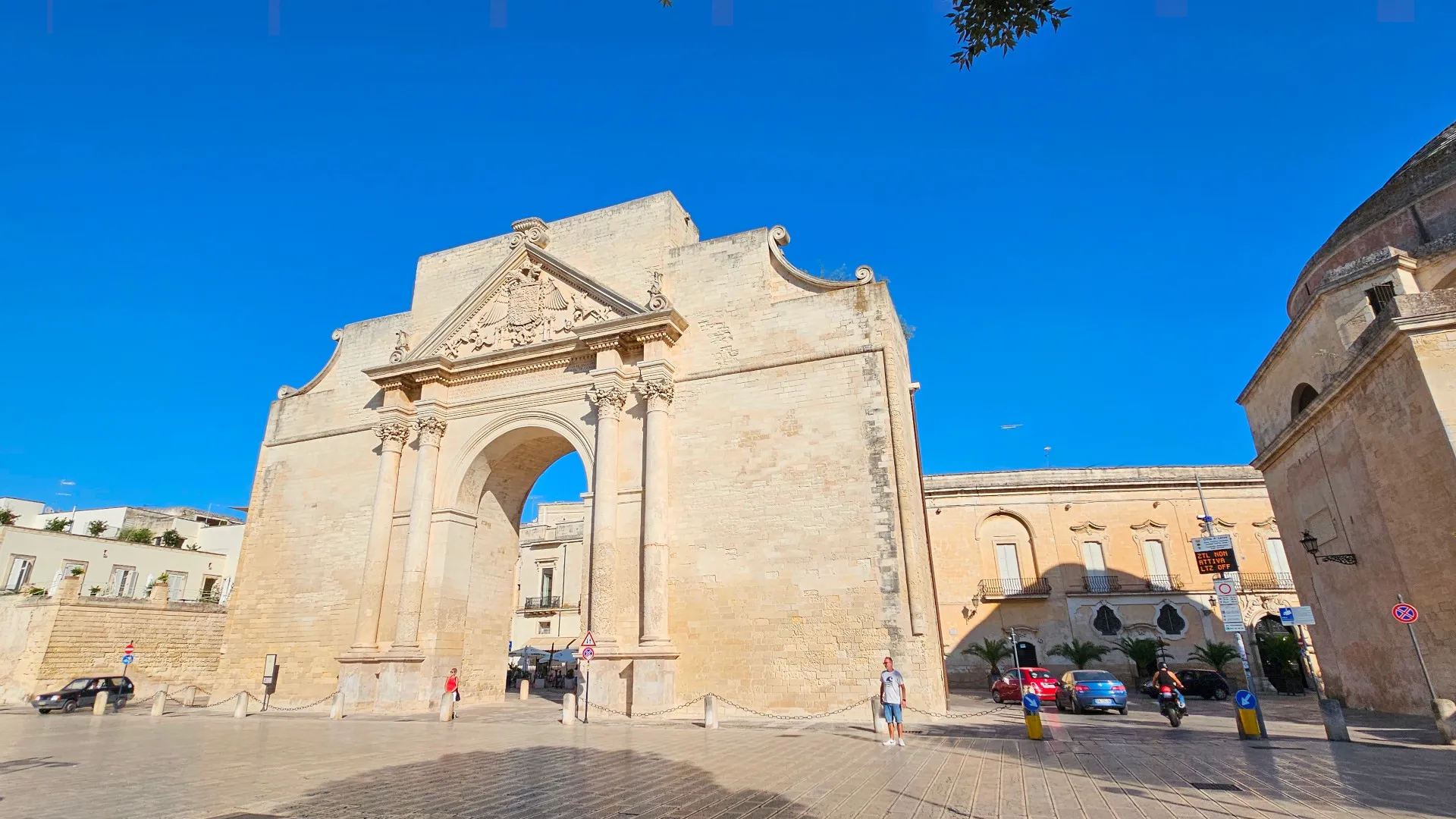
Porta Napoli, one of the most famous gateways to the city of Lecce, is an imposing triumphal arch that marks the historical entrance into the Baroque heart of the city. Erected in 1548, the gate was built to commemorate the visit of Emperor Charles V, who had ordered the strengthening of Lecce’s city walls to protect them from Ottoman incursions.
The arch is decorated with classical elements, such as Corinthian columns supporting a triangular pediment. At the center of the pediment is the coat of arms of Emperor Charles V, surrounded by sculptural decorations that include floral motifs and symbols of the era.
The arch is topped by a statue of Sant'Oronzo, the patron saint of the city of Lecce, looking towards the city itself.
Historical Significance
Porta Napoli not only served as a fortified entry point but was also a symbol of power and protection. Its construction represented the city's gratitude towards the emperor for strengthening Lecce’s defenses, a city then on the borders of the Kingdom of Naples and frequently exposed to invasion risks.
Visual Experience
The area around Porta Napoli has been redeveloped over the years, with the removal of heavy traffic to preserve the structure and enhance the visitor experience.
Walking through this gate today offers a sense of passing from the modern to the historical, as you enter the Baroque historic center of Lecce, rich in churches, ancient palaces, and squares.
Visits and Accessibility
Porta Napoli is freely accessible to anyone wishing to explore this part of Lecce. There are no tickets to purchase or opening hours to consider, making it a practical attraction to visit at any time.
Its location at the entrance to the historic center makes it an ideal starting point for a walk to discover the architectural and cultural wonders of Lecce.
MUST - Historical Museum of the City of Lecce
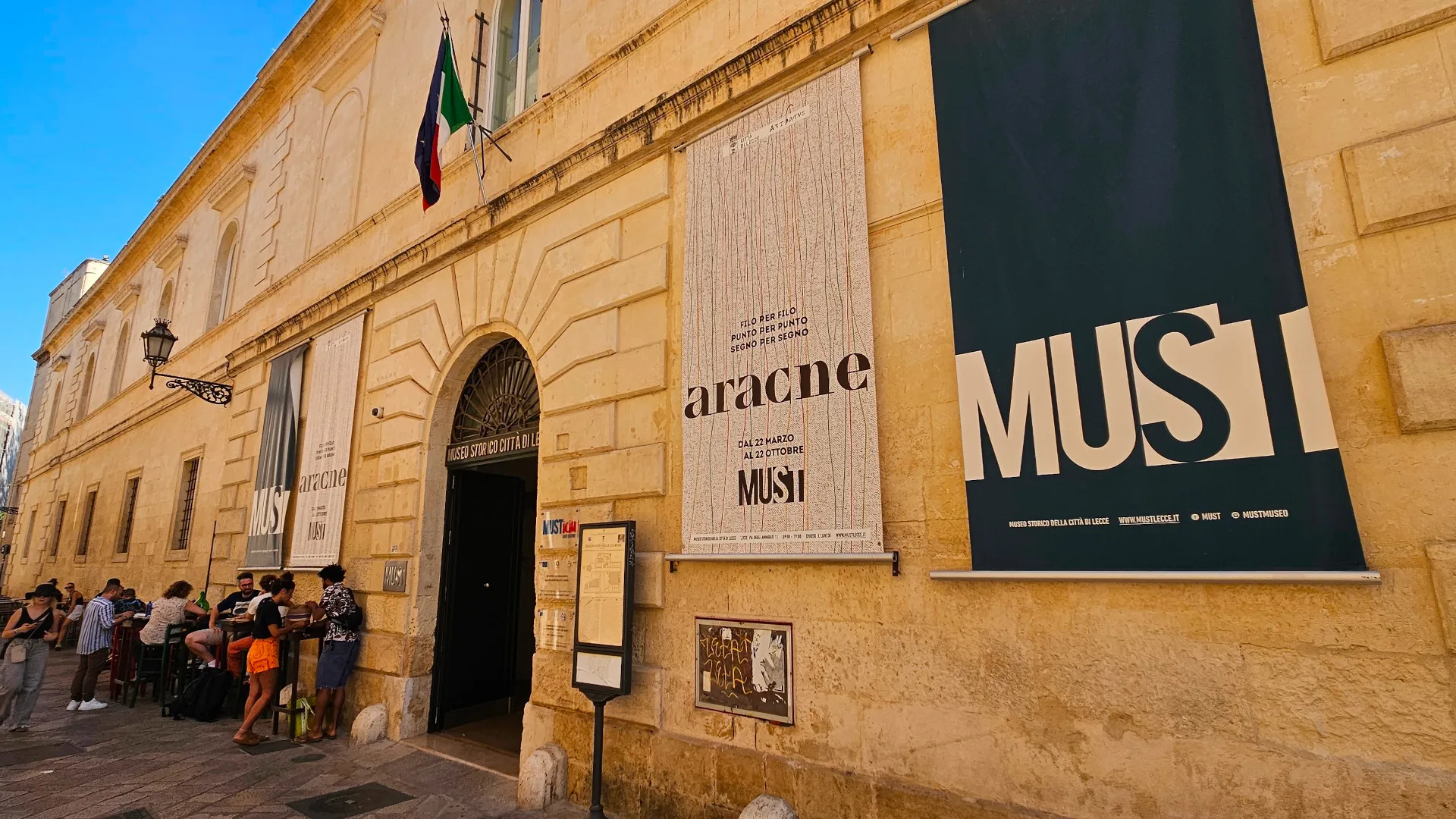
MUST – Historical Museum of the City of Lecce is a museum that offers an in-depth look at the history and cultural heritage of Lecce through its collections and exhibitions.
Located in the historic center of the city, the museum is housed in a historical building that has been renovated and adapted to accommodate the various collections and temporary exhibitions.
Permanent Collections
- Archaeology: The archaeological section of the museum houses artifacts ranging from the Bronze Age to the Roman and medieval periods. These include ceramics, coins, everyday tools, and other objects that illustrate daily life in various historical epochs.
- Sacred Art: This collection includes artworks from churches in Lecce and the surrounding region. The displayed items include paintings, sculptures, silverware, and liturgical textiles, demonstrating the evolution of sacred art, particularly during the Baroque period, for which Lecce is famous.
- Historical Documentation: The museum preserves a wide range of historical documents that cover several centuries, offering an in-depth look at the political, social, and economic events that have shaped the city and the Salento region.
Temporary Exhibitions
Temporary exhibitions at MUST are often focused on specific themes related to the history, art, or culture of Lecce and may include:
- Contemporary Art Exhibitions: Exhibits that feature works by local or international artists, often with a focus on modern themes or social issues.
- Historical Photography: Exhibitions that use archival photographs to explore particular aspects of Lecce's history, such as urban development, cultural traditions, or significant events.
- Interactive Installations: Exhibits designed to be more immersive and interactive, using technology to engage visitors and provide a more dynamic educational experience.
Educational Programs and Events
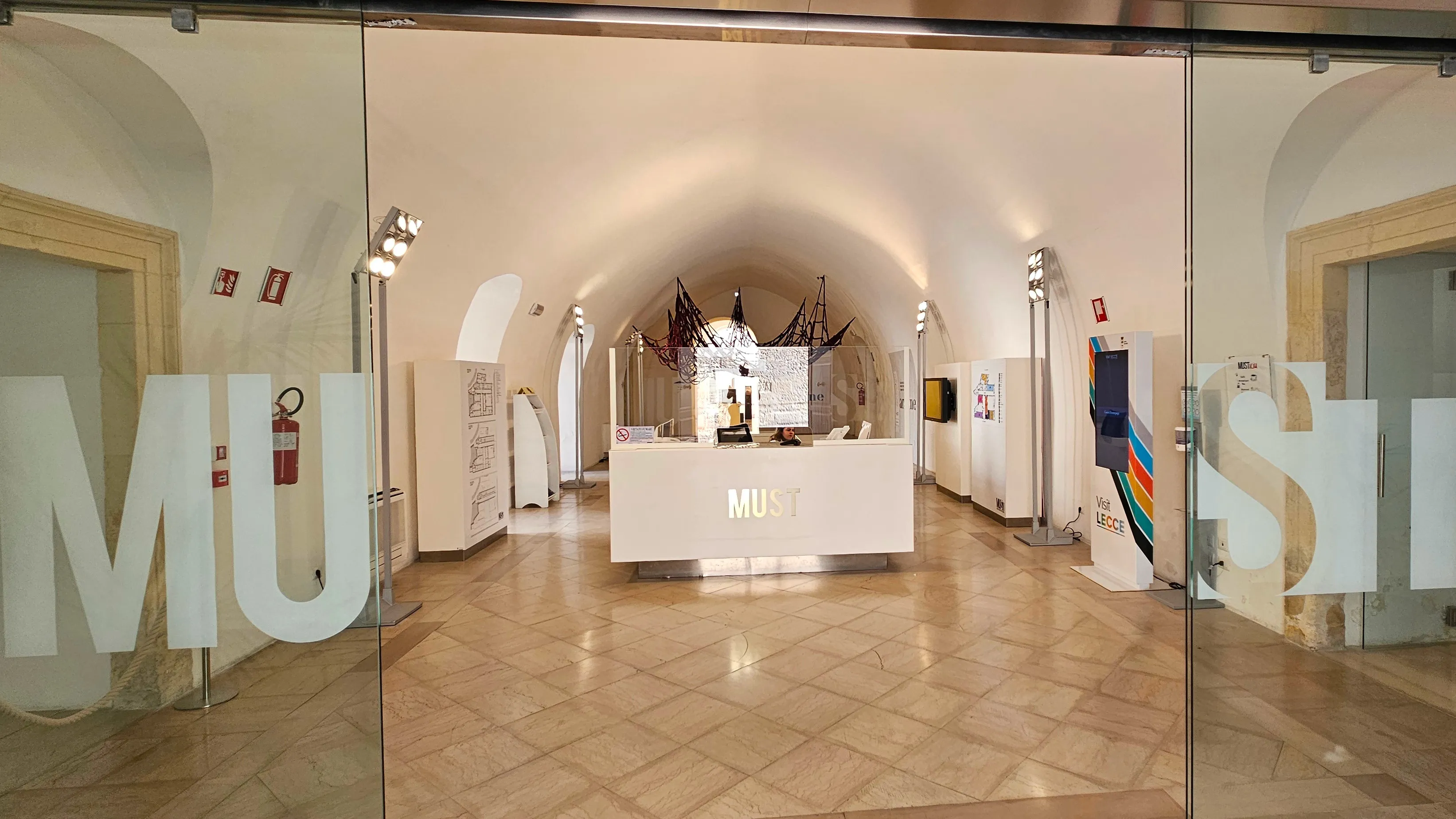
MUST not only hosts exhibitions but also offers a range of educational programs and events, such as lectures, seminars, and workshops for schools and adults. These programs are often related to the current exhibitions and are designed to deepen the understanding of the themes explored.
Access to Collections
The museum makes its collections accessible not only through physical exhibitions but also through catalogs and digital resources, allowing visitors to explore the collections virtually as well.
Hours and Tickets
Hours: Tuesday to Thursday, from 9:00 am to 7:00 pm From Friday to Sunday, from 9:00 am to 8:00 pm Closed on Monday
Tickets: full €5.50, reduced €3.50 (for students, teachers, tour guides, and over 65) Free entry for children up to 10 years old
Visits
The Roman Theater can be visited by purchasing a ticket, the cost of which contributes to the maintenance and funding of excavations and cultural activities. Visiting the theater provides an exceptional opportunity to immerse oneself in Roman history and appreciate ancient architecture in one of its most vibrant and preserved contexts.
Piazza Mazzini

Piazza Mazzini in Lecce is one of the modern nerve centers of the city, representing the commercial heart and one of the main centers of social life.
Unlike the historic Baroque areas for which Lecce is famous, Piazza Mazzini offers a more contemporary view of the city, focusing on shopping, entertainment, and modern life.
- Shopping Hub: Piazza Mazzini is considered the center of modern shopping in Lecce. It is surrounded by a variety of stores, from fashion boutiques to large brand shops, making it a popular destination for both residents and tourists looking for shopping experiences.
- Modern Architecture: The square is characterized by more modern architecture compared to the rest of Lecce's historic center. The buildings around the square are newer constructions with clean facades and contemporary design, offering an interesting contrast to the Baroque architecture for which the city is known.
- Public Space and Socialization: The square is a social gathering place. It frequently hosts public events, such as markets, festivals, and concerts, attracting a diverse array of people and creating a lively and dynamic environment.
Attractions in Piazza Mazzini
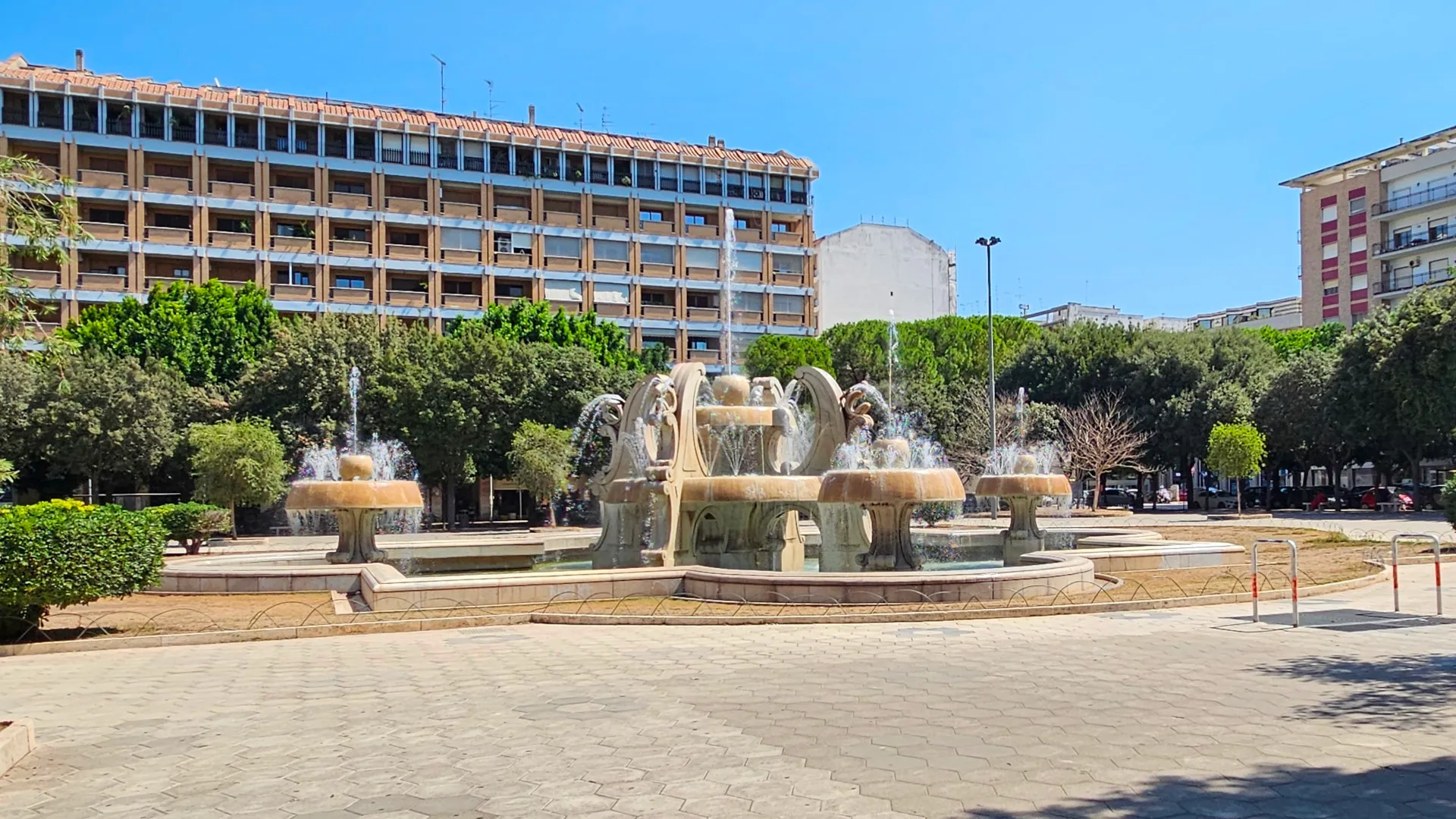
- Piazza Mazzini Fountain: A large modern fountain is situated at the center of the square, serving as a focal point and meeting place. In the evenings, the fountain is often illuminated, creating a picturesque and atmospheric setting.
- Public Gardens: Adjacent to the square are well-maintained public gardens, offering a green space for relaxation. These gardens are a great place to take a break from shopping or simply to enjoy a moment of tranquility.
- Cafés and Restaurants: Around the square, numerous cafés and restaurants offer the chance to taste both local and international cuisine. These establishments are perfect for watching the hustle and bustle of city life while sipping a coffee or enjoying a meal.
Accessibility
Piazza Mazzini is easily accessible on foot and by car, with several parking options nearby. It is also well connected to the rest of the city by public transport.
Torre del Parco
Torre del Parco in Lecce is one of the city's most important and well-preserved medieval structures. Built in 1419 by the order of Giovanni Antonio Orsini Del Balzo, Prince of Taranto, the tower was originally part of a larger complex that included a hunting park and other residential structures. The tower was used as a fortified residence and also served as a gathering place for the nobility and for hosting court events.
Features of Torre del Parco
Torre del Parco is a massive structure with thick stone walls and a square base. It is tall and imposing, with few openings, which reflects its defensive function. At the top, the tower is decorated with Guelph merlons, adding an aesthetic as well as functional element.
Inside, the tower still retains many of its original features, including vaulted ceilings, stone fireplaces, and medieval frescoes, which offer a direct immersion into the life and architecture of the 15th century.
Inside the tower, you can find frescoes dating back to the Middle Ages, decorating some of the walls.
History and Use
The tower has a long and varied history. In addition to being a noble residence, it has been used for various purposes over the centuries, including as a prison.
In the 20th century, the tower was restored and today is used as a venue for cultural and social events, including concerts, art exhibitions, and receptions.
Events and Visits
The tower is open to the public for visits, allowing visitors to explore its architecture and participate in the events held there.
Exhibitions and Displays
Today, Torre del Parco frequently hosts cultural events and temporary exhibitions. These exhibitions can include modern artworks, historical photographs, or documents that explore various aspects of the history and culture of Lecce and the Salento region.
Panoramic Views
From the top of the tower, visitors can enjoy panoramic views over the city of Lecce, offering a unique perspective on the surrounding urban landscape and beyond.
Hours and Admission
The opening hours and days of access to Torre del Parco may vary depending on the management of events and temporary exhibitions held there.
Generally, for access to the tower during special events, exhibitions, or concerts, an admission ticket may be required, the cost of which varies depending on the specific event.
For ordinary tourist visits, if available outside of special events, there might be a moderate entrance fee for maintenance and operational expenses of the site. This contribution helps preserve the tower and fund the cultural programs that take place there.
Public Gardens Giuseppe Garibaldi (Villa Comunale di Lecce)

The Public Gardens Giuseppe Garibaldi of Lecce, also known as Villa Comunale, are an essential green space in the heart of the city, offering residents and visitors an oasis of tranquility away from urban bustle. Located near the historic center, these gardens are an ideal place for relaxation, strolling, and enjoying nature.
Features of the Public Gardens
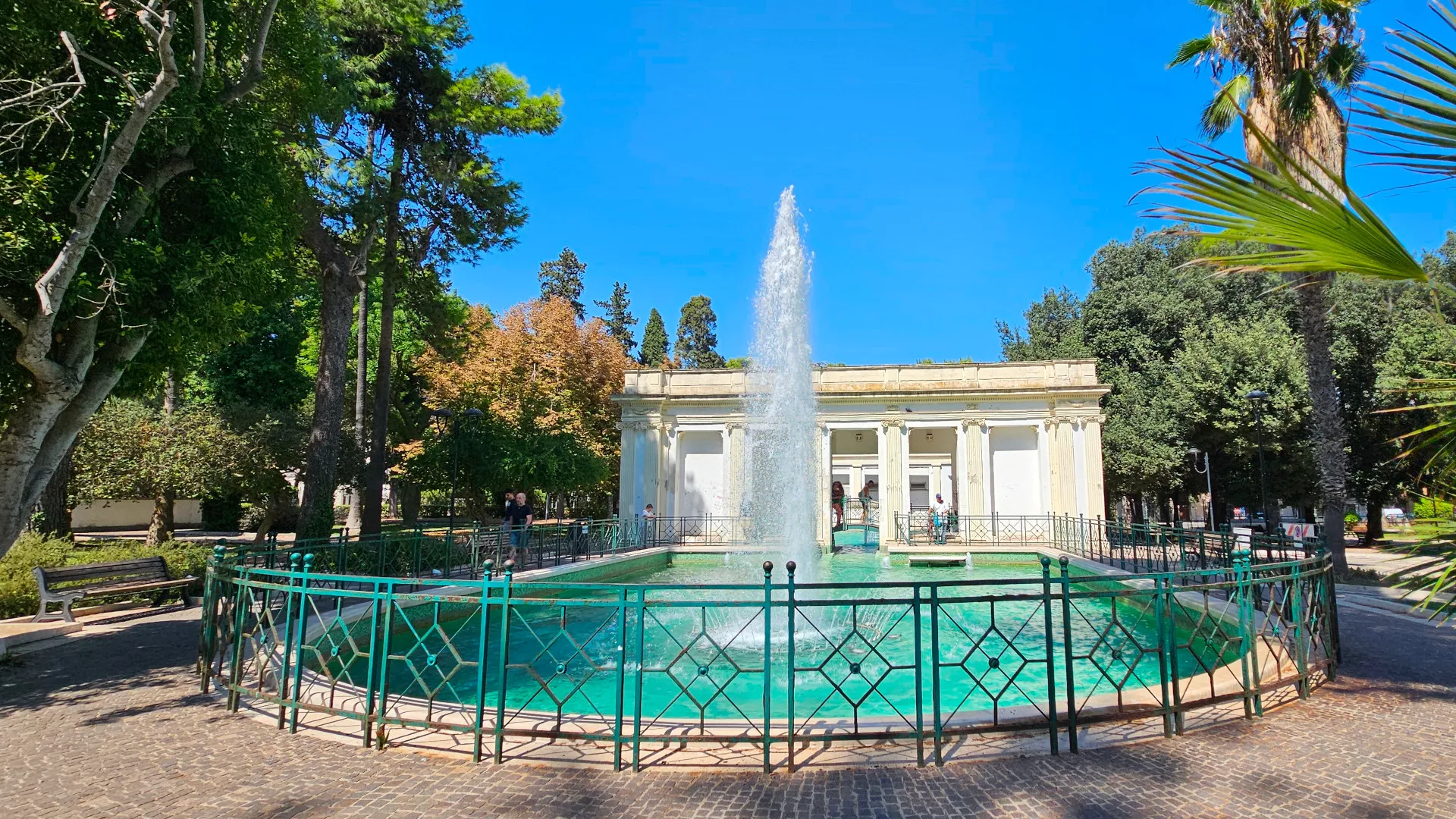
- Varied Flora: The Public Gardens of Lecce are known for their variety of well-maintained plants, trees, and flowers, which include both native and exotic species. This botanical diversity not only beautifies the area but also provides a habitat for many species of birds and small animals.
- Paths and Rest Areas: The gardens are equipped with numerous pedestrian paths that invite pleasant walks among the greenery. There are also several areas with benches where visitors can sit and relax, read a book, or simply enjoy the surrounding environment.
- Fountains and Statues: Within the gardens, there are several artistic fountains and statues, which not only decorate the space but are also focal points for those seeking a moment of reflection or a beautiful backdrop for photographs.
- Children's Play Area: The gardens include a dedicated play area for children, making them a family-friendly place where little ones can play safely and freely.
- Cultural and Social Events: Frequently, the Public Gardens of Lecce host cultural events, outdoor concerts, exhibitions, and educational activities, making them a community gathering point and a center of cultural activity.
Importance to the City
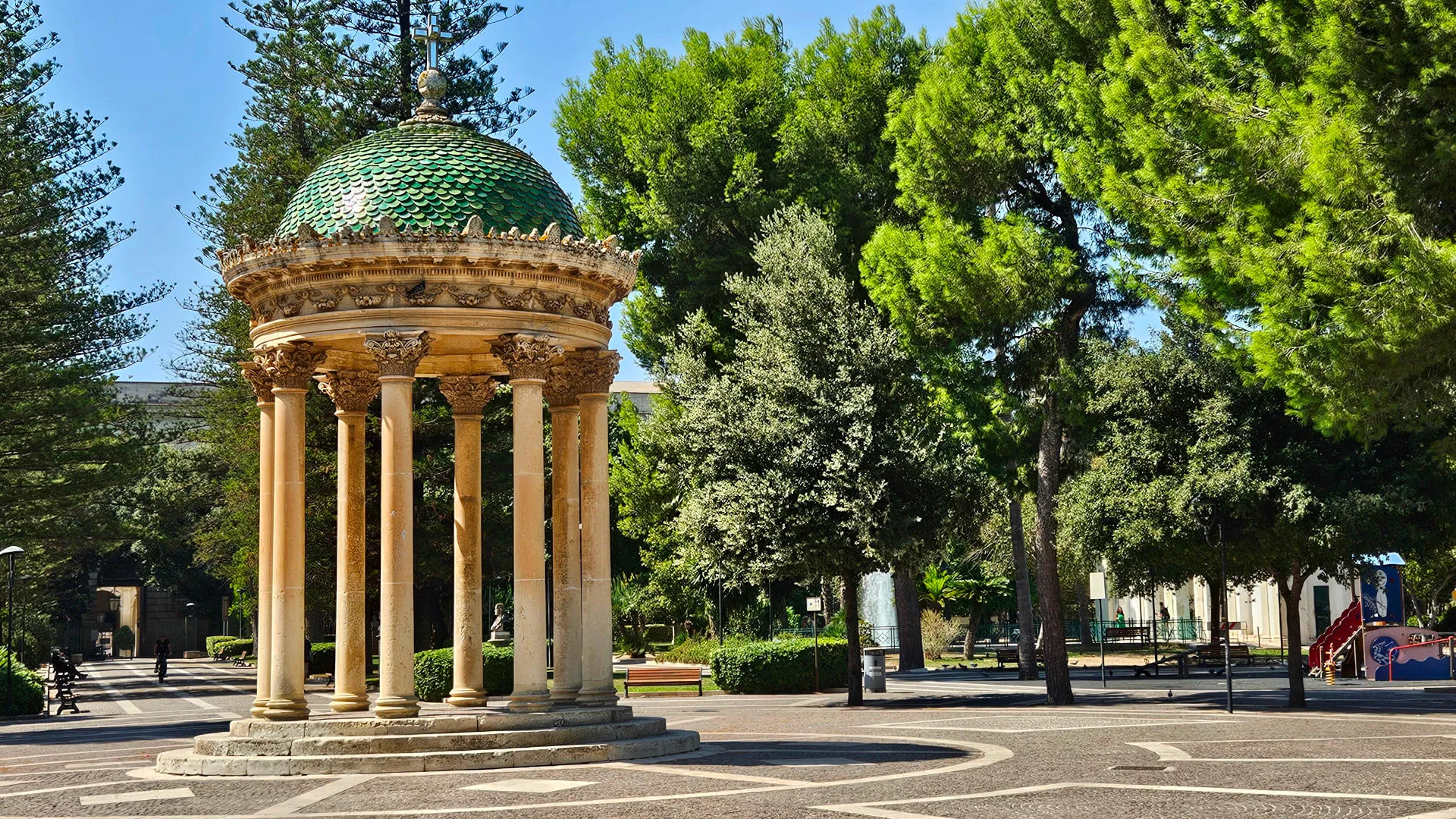
The Public Gardens not only enhance urban life quality by providing a space for rest and relaxation but also contribute to the ecological well-being of Lecce. They serve as green lungs that help purify the air and offer a counterbalance to the built-up areas of the city.
Access
Access to the Public Gardens of Lecce is free and open to all. These gardens are easily accessible on foot from the historic center and are open all year round, making them a perfect destination for a daily walk or a relaxing break during a city visit.
What to Do in Lecce?
Here are some of the best things to do in Lecce:
- Explore Baroque Architecture: Wander through the historic center of Lecce and admire the extraordinary facades of churches and palaces, masterpieces of Baroque art. Don't miss the Basilica of Santa Croce and the Cathedral of Lecce, which are iconic symbols of Baroque art.
- Visit Museums and Galleries: Lecce is home to several museums that offer insights into the history and art of the region. The MUST (Historical Museum of the City of Lecce) and the Faggiano Museum, a unique archaeological site turned into a museum, are two of the main cultural attractions.
- Savor Local Cuisine: Lecce is famous for its Apulian cuisine, which includes dishes like "rustico leccese" (a pastry filled with mozzarella, tomato, and béchamel), "pittule" (savory fritters), and of course, "orecchiette" with turnip tops. Don't forget to try the "pasticciotto," a traditional dessert filled with cream.
- Enjoy Events and Festivals: Lecce hosts numerous cultural events, film festivals, theatrical performances, and concerts, especially during the summer months. The "Night of the Taranta" is one of the most popular events, celebrating traditional Apulian music with dances and concerts.
- Relax in Public Gardens: For a break from the urban pace, visit the Public Gardens of Lecce. These green spaces offer a tranquil place to stroll, read a book, or simply relax.
- Artisanal Shopping: Lecce is renowned for its Lecce stone and papier-mâché crafts. Visit local craft shops to find a unique piece to take home as a souvenir.
Lecce offers a wide range of activities that satisfy the desire for culture, food, history, and relaxation, making it an ideal destination for various types of travelers.
Events and Festivals
Festival of Sant'Oronzo
The Festival of Sant'Oronzo is one of the most important and heartfelt events in Lecce, celebrating the city's patron saint with great fervor and devotion.
Sant'Oronzo is venerated as the one who, according to tradition, saved Lecce from a devastating plague in 1656.
His feast is, therefore, a time of deep spirituality and gratitude, with religious processions that see the statue of the saint carried through the city streets in a sign of homage and prayer.
- Location: The celebrations take place mainly in the historic center of Lecce, with events focused around Piazza Sant'Oronzo.
- Period: From August 24 to 26. During these days, the city celebrates with religious processions, food stands, concerts, and fireworks in honor of the city's patron saint.
Eurochocolate
Eurochocolate is one of the most important and well-known events dedicated to chocolate in Italy and Europe. Originally founded in Perugia in 1994, this festival has achieved enormous success and has expanded to other cities, including Lecce.
Eurochocolate celebrates artisanal and quality chocolate, providing a platform for local and international producers to showcase and sell their products.
Furthermore, the event also features workshops, exhibitions, chocolate sculptures, cooking shows, and educational seminars about chocolate, educating the public about the history of chocolate, production methods, health benefits, and crafting techniques.
- Location: This festival takes place at various locations in the city center, often including squares like Piazza Sant'Oronzo and surrounding streets.
- Period: Dates may vary, but it generally takes place in the spring, offering a wide range of chocolate-related events, including tastings, workshops, and artistic installations.
The Night of the Taranta
The Night of the Taranta is one of the most significant and popular music events in Italy, focused on promoting and celebrating the pizzica, a traditional folk dance of Salento.
In addition to celebrating music and dance, the festival promotes the culture, language, cuisine, and crafts of Salento, helping to enhance and spread the cultural heritage of this geographical area.
- Location: Although the final concert takes place in Melpignano, related events occur throughout Salento, including Lecce, during the summer months.
- Period: August. It is the largest folk music festival in Italy, centered on Salento's pizzica, featuring performances by local and international musicians.
European Film Festival
The festival attracts film enthusiasts and industry professionals, including directors, producers, screenwriters, and critics. This facilitates professional networking and offers opportunities for collaboration and future project development.
As a significant cultural event, the European Film Festival attracts visitors from other regions and nations, positively impacting the local economy.
- Location: Mainly at Cinema Multisala Massimo and other cultural venues in Lecce.
- Period: Usually in April. The festival features a selection of European films, workshops, and meetings with industry professionals.
Lecce Food Festival
The festival showcases Salento cuisine, known for its rich flavors of Mediterranean dishes and high-quality local ingredients.
The event attracts visitors not only from Puglia but from all over Italy and abroad, promoting Lecce as a culinary tourism destination.
- Location: Various squares in the historic center, such as Piazza Sant'Oronzo and Charles V Castle.
- Period: Dates may vary, but it usually takes place in the spring or early summer. The festival celebrates local and international cuisine.
Santa Lucia Fair
Originally linked to the worship of Santa Lucia, the patron saint of the blind and protector of sight, this fair has deep roots in the history and tradition of Lecce and continues to be an eagerly anticipated event by the local community.
During the fair, local merchants and craftsmen have the opportunity to display and sell a wide range of products, from traditional sweets and street food to toys, crafts, and gift items. This stimulates the local economy and also supports small producers, artists, and craftsmen in the region.
- Location: It mainly takes place near the Church of Santa Lucia in Lecce.
- Period: December, in the days leading up to Christmas. The fair offers an opportunity to purchase local crafts, typical sweets, and Christmas gifts.
Lecce Baroque
The "Lecce Baroque" event is crucial for promoting and celebrating the rich Baroque architectural and cultural heritage of Lecce, known for its extraordinary beauty and historical importance.
"Lecce Baroque" helps highlight and enhance the architectural wonders of this city through a series of events, exhibitions, and guided tours, attracting attention from both local and international visitors.
- Location: Events spread across various Baroque churches and squares in the city.
- Period: Often in the autumn, this event literally and figuratively illuminates Lecce's Baroque architecture with performances, concerts, and nighttime guided tours.
What to See Near Lecce
Here are some places to visit around Lecce:
- Otranto: This coastal town is famous for its beautiful cathedral, which houses the famous floor mosaics depicting biblical stories, and its imposing castle. Don't miss a walk along the beach and the old town.
- Gallipoli: Known as the "pearl of the Ionian Sea," Gallipoli is famous for its crystal-clear waters and golden beaches. The historic center, located on an island connected to the mainland by a bridge, is full of Baroque churches and historic buildings.
- Santa Maria di Leuca: Located at the southern tip of Puglia, where the Ionian Sea meets the Adriatic Sea, Santa Maria di Leuca is known for its lighthouse, the basilica, and its Art Nouveau villas. It is also a great starting point for boat trips along the coast.
- Castro and the Zinzulusa Cave: Castro is a small seaside village with a beautiful historic center and a castle. Near Castro is the Zinzulusa Cave, one of the most fascinating sea caves in Salento, accessible both by land and sea.
- Porto Selvaggio Natural Regional Park: This park offers one of the most beautiful and unspoiled coastal stretches in Salento, with hiking trails leading to hidden bays and panoramic sea views.
- Torre dell'Orso and Roca Vecchia: These coastal locations are famous for their fine sandy beaches and crystal-clear water. Roca Vecchia is also known for its archaeological site and the Grotta della Poesia, a round-shaped natural pool popular with bathers.
- Porto Cesareo: Known for its long white sandy beaches and transparent waters, Porto Cesareo is also an important center for the study of marine systems, thanks to a marine reserve that protects various species of flora and fauna.
- Melpignano: Home to the final concert of the "Night of the Taranta," the largest music festival dedicated to the pizzica and taranta, traditional Salentine dances that attract thousands of visitors and folk music enthusiasts each year.
History of Lecce
Lecce is a city steeped in history and culture. Its origins date back well before the Roman era. However, it was during the Roman period that Lecce, then known as Lupiae, began to emerge as a crucial urban center.
Roman Period
During the Roman period, Lecce became a crucial administrative center and was equipped with significant infrastructure such as an amphitheater and a theater, evidence of the central role the city played in that region. These structures are still partially visible today and represent important tourist attractions.
Middle Ages
With the fall of the Roman Empire, Lecce came under the control of various rulers, including the Goths, Byzantines, and finally the Normans in the Middle Ages. Under the Normans and later the Swabians, including the famous figure of Frederick II, Lecce was fortified and continued to thrive.
Aragonese and Spanish Period
The true renaissance of Lecce, however, occurred under Aragonese and Spanish rule, beginning in the 15th century. During this period, the city became famous for its distinctive Baroque style, now known as Lecce Baroque.
This style is characterized by the extensive use of Lecce stone, a local limestone that is easy to work with. Artisans carved it into intricate and detailed shapes to decorate the facades of churches, monasteries, palaces, and altars.
The Baroque of Lecce
The 17th and 18th centuries were the period of greatest splendor for Lecce, with the construction of numerous Baroque buildings that transformed the urban fabric.
Works like the Basilica of Santa Croce and the Church of the Rosary are spectacular examples of this rich and ornate style.
Contemporary Era
Throughout the 19th and 20th centuries, Lecce continued to develop, although more slowly compared to the Baroque boom. During this time, the city expanded its educational and cultural infrastructure, becoming home to significant educational institutions.
Today, Lecce is known for its incredible Baroque heritage and as a cultural center of Salento.
Conclusions
With a past that extends from the Roman era through the Middle Ages to the Baroque renaissance under Spanish rule, the city is a veritable open-air museum, dotted with majestic churches, ancient amphitheaters, and palaces intricately sculpted in local Lecce stone.
Cultural events like La Notte della Taranta and the European Film Festival infuse life into the city, attracting visitors from around the world and keeping the city's rich artistic tradition alive.
Lecce is a historic landmark and a vibrant community hub, where Salentine cuisine and southern Italian hospitality blend to create an unforgettable experience.
Whether it's exploring Baroque architectural masterpieces, participating in dynamic festivals, or savoring local culinary delights, Lecce offers a unique taste of Italian cultural heritage, making it a must-visit destination for anyone visiting Salento
